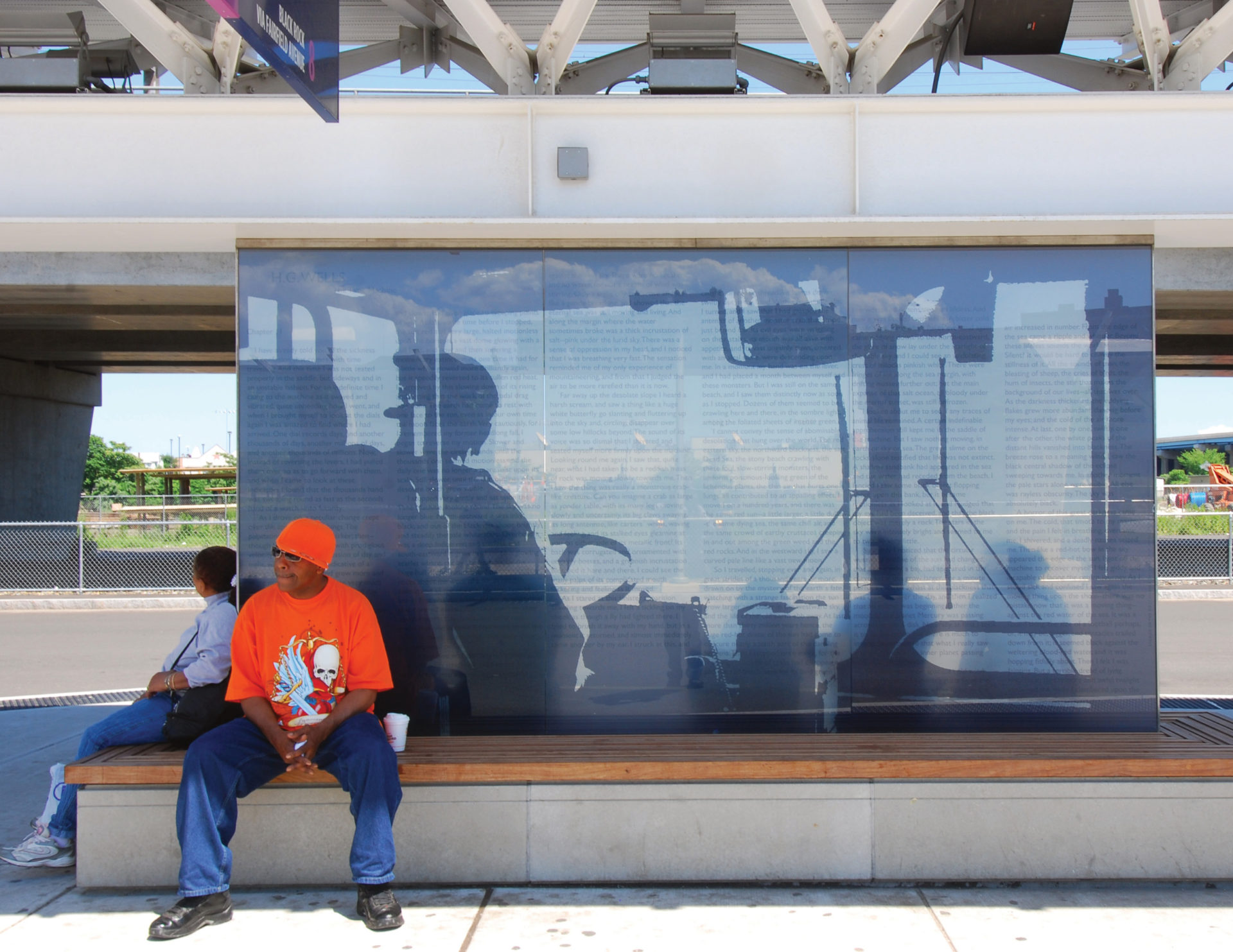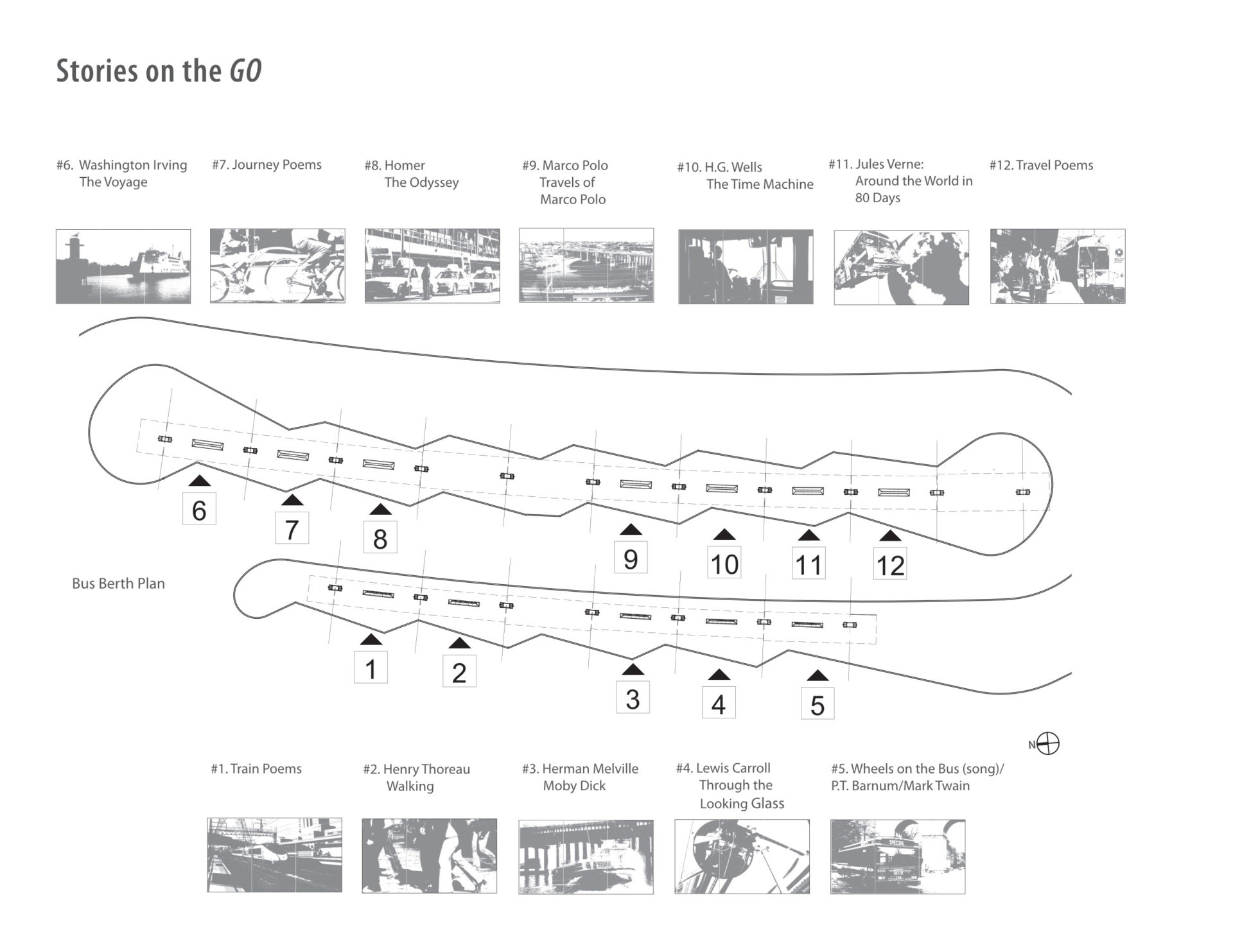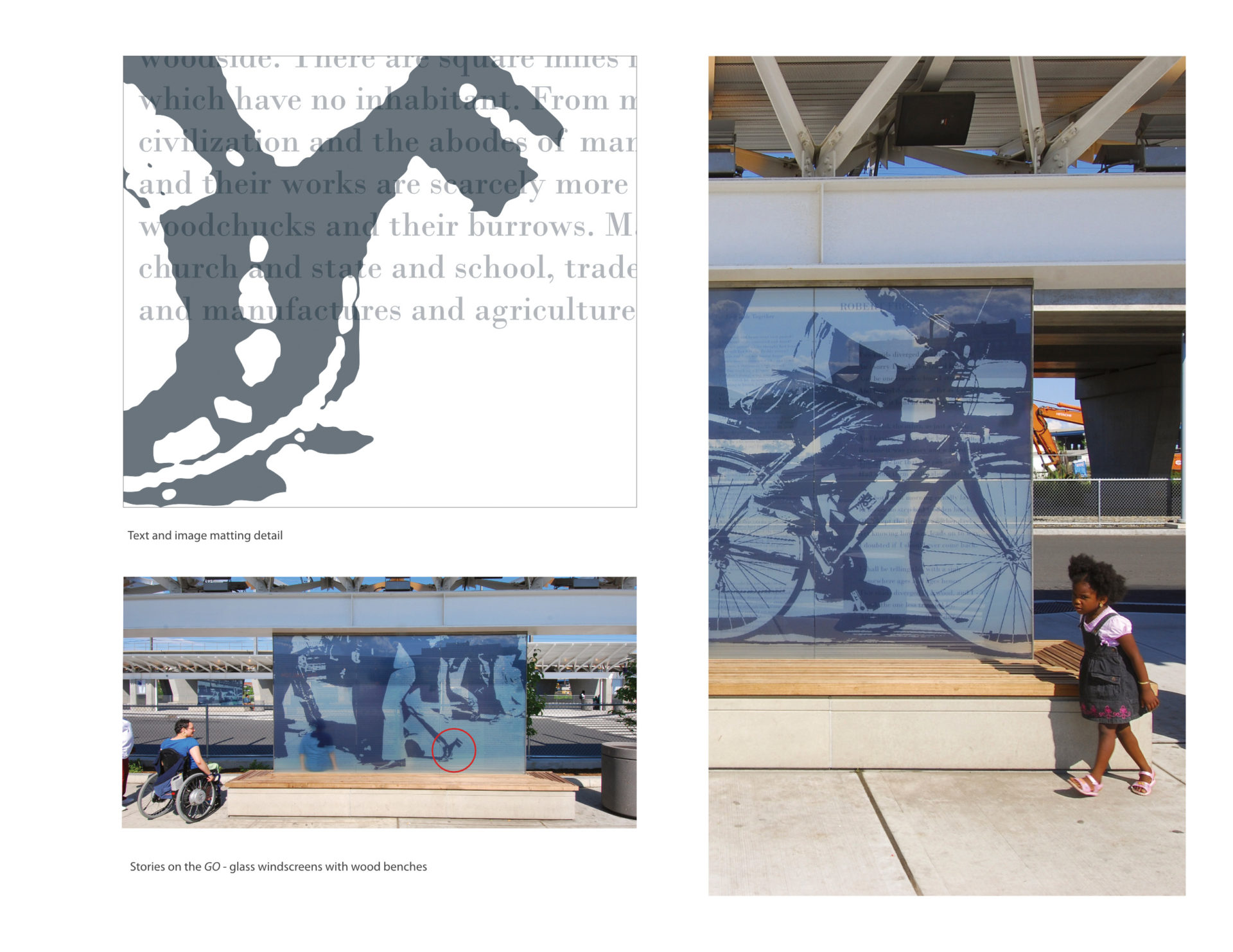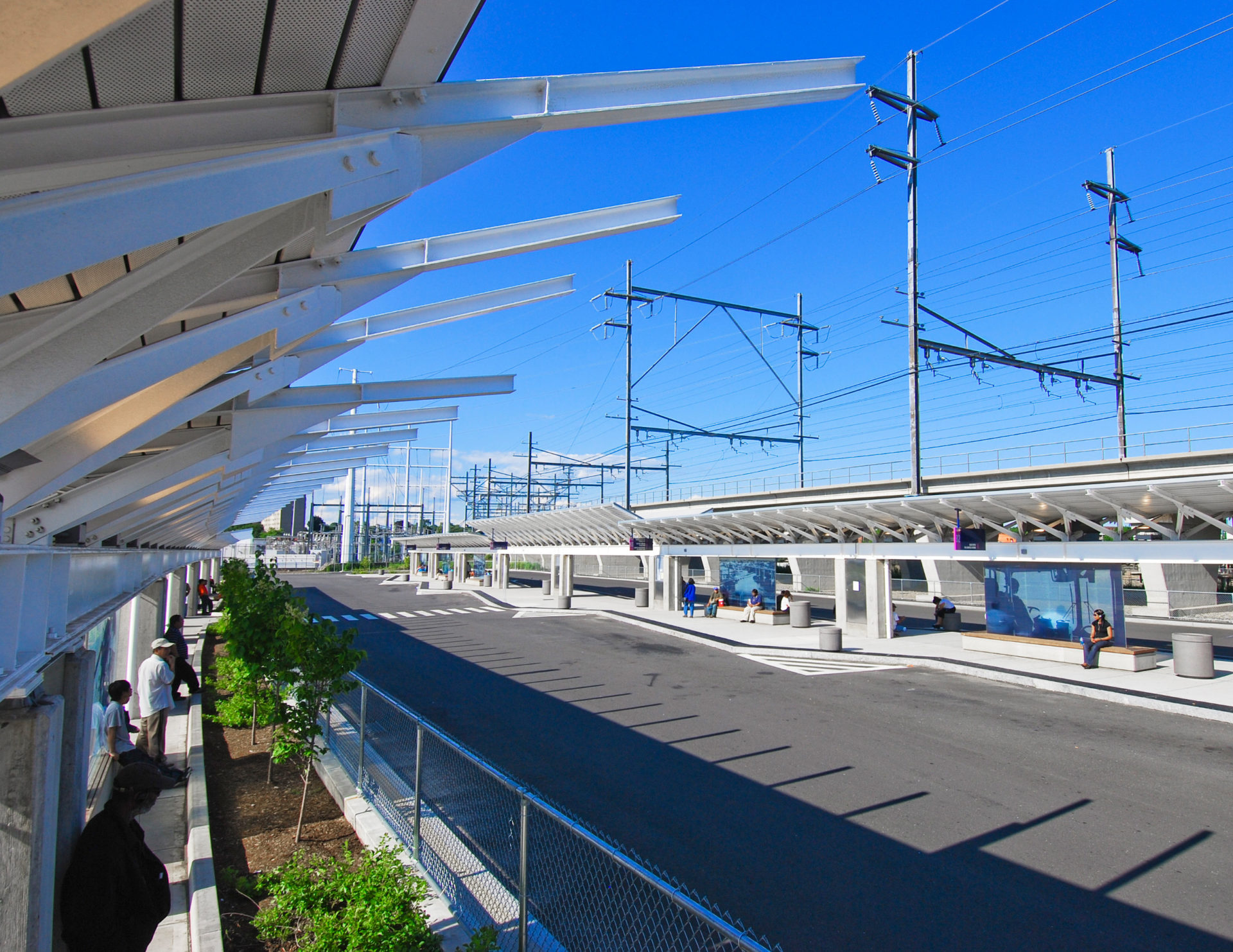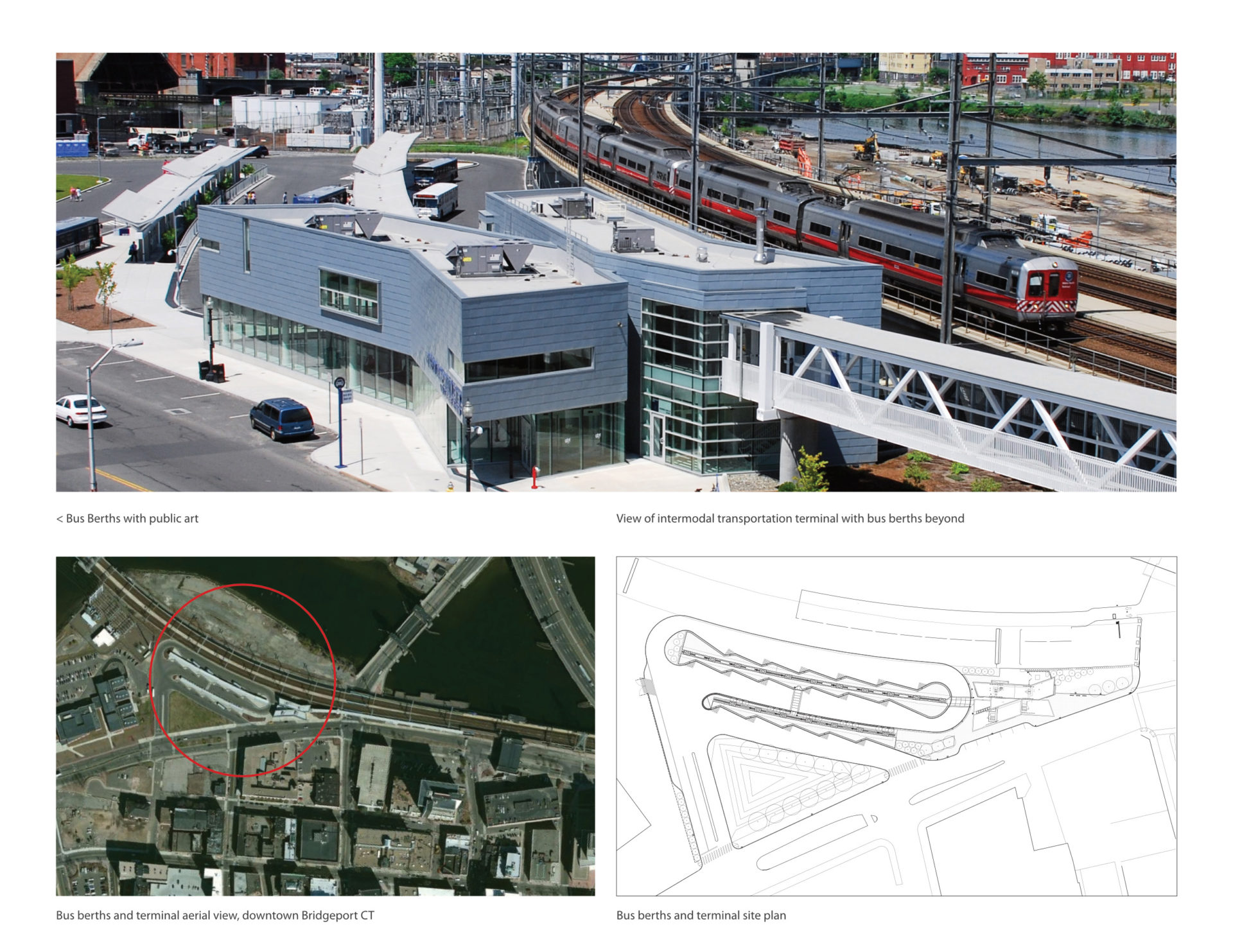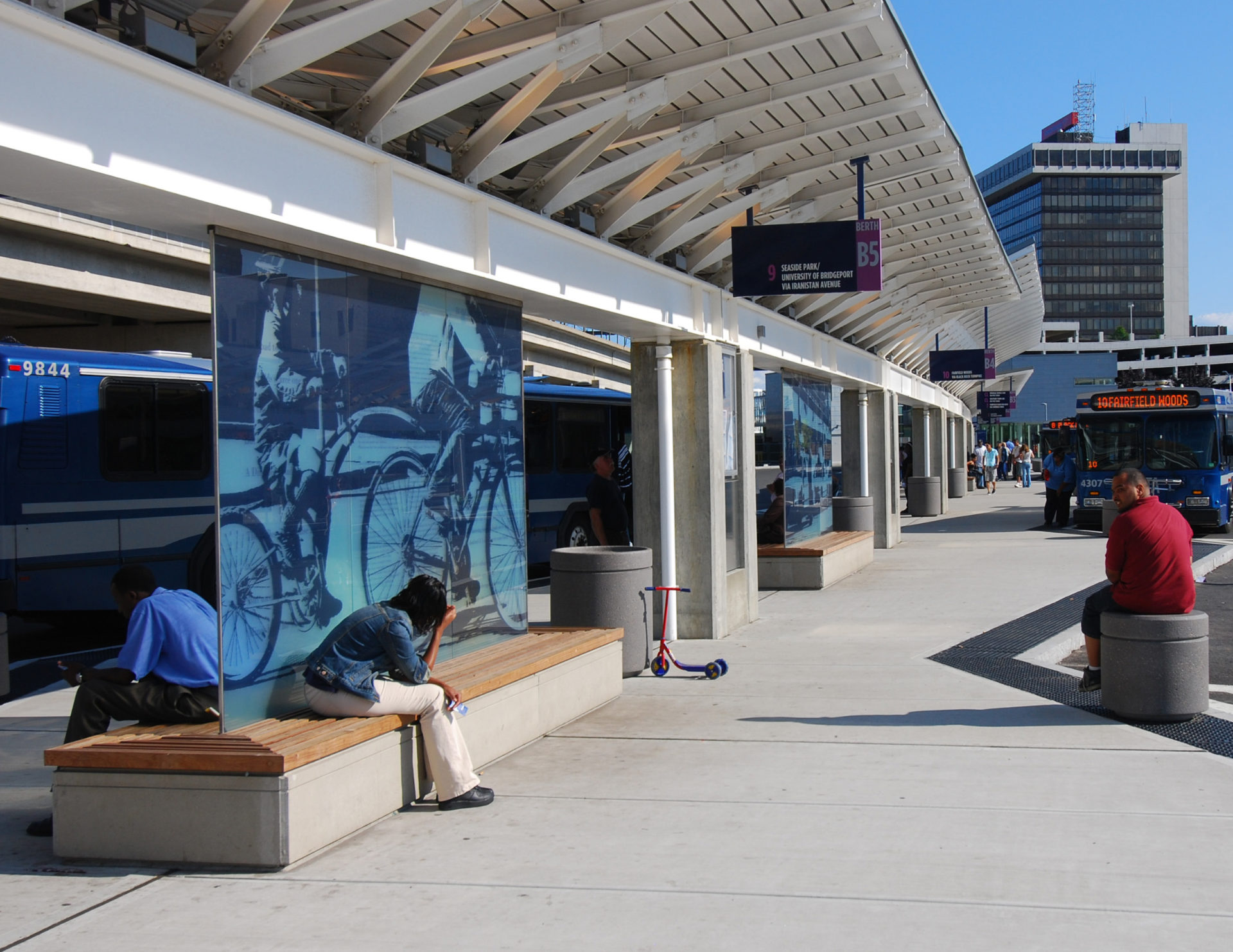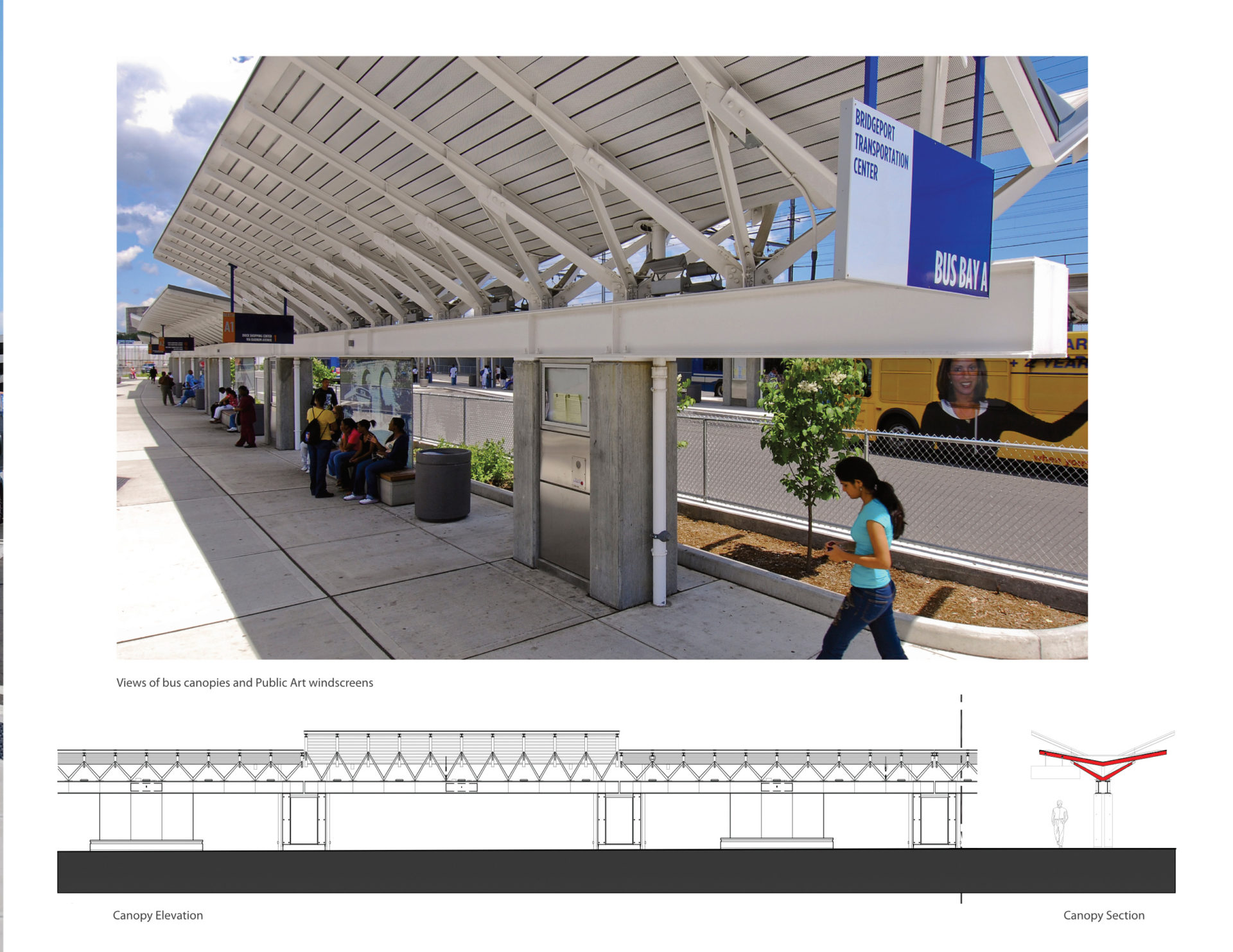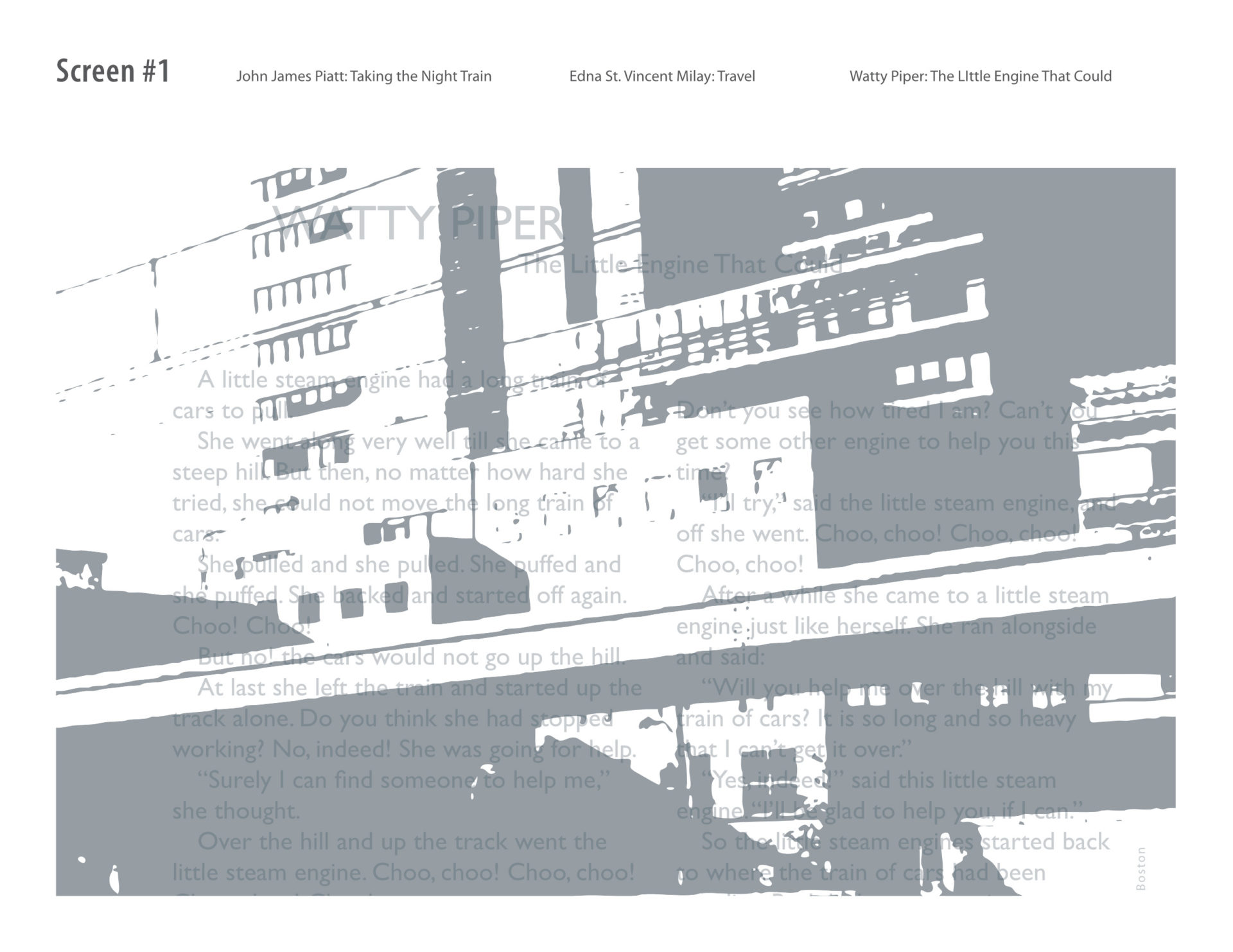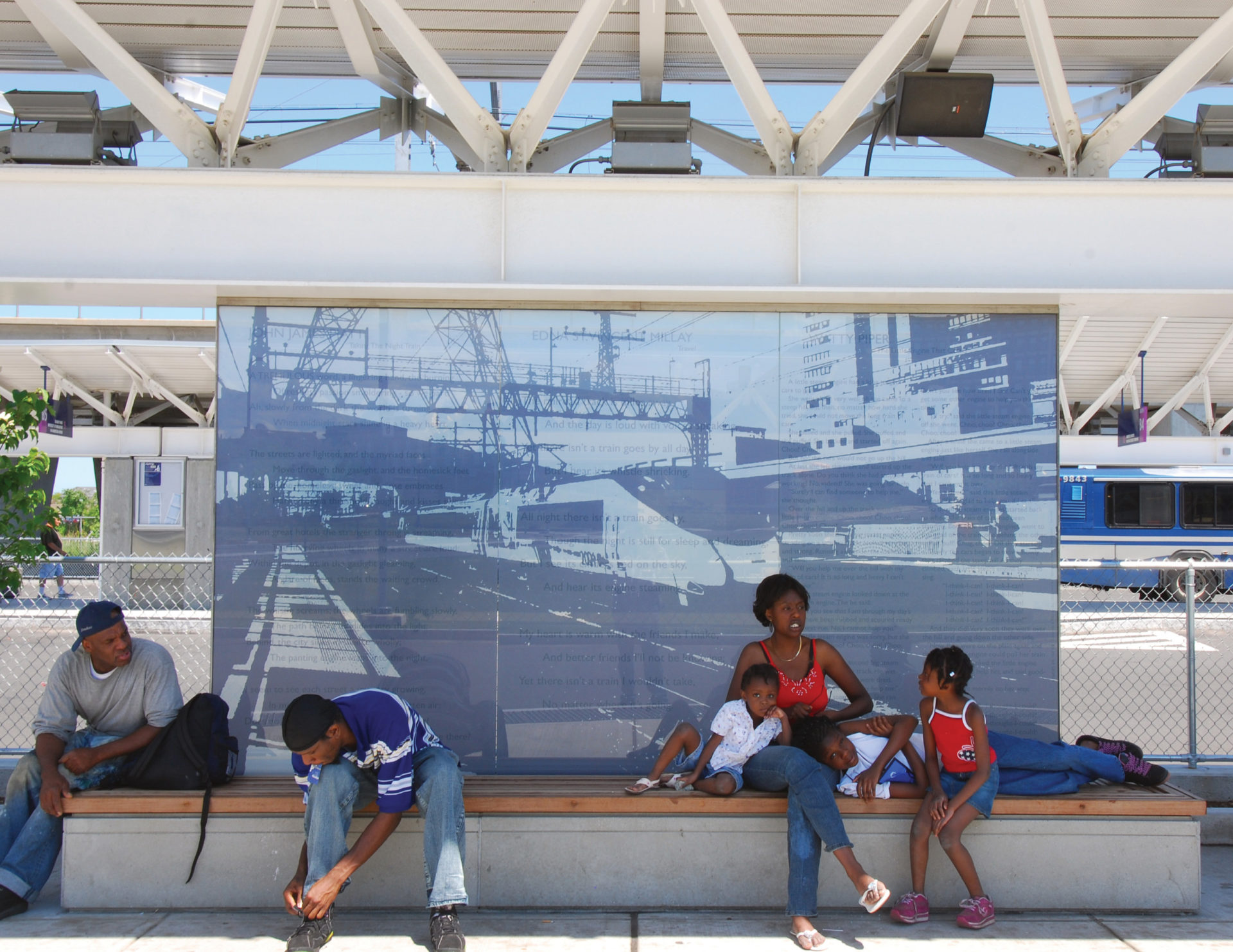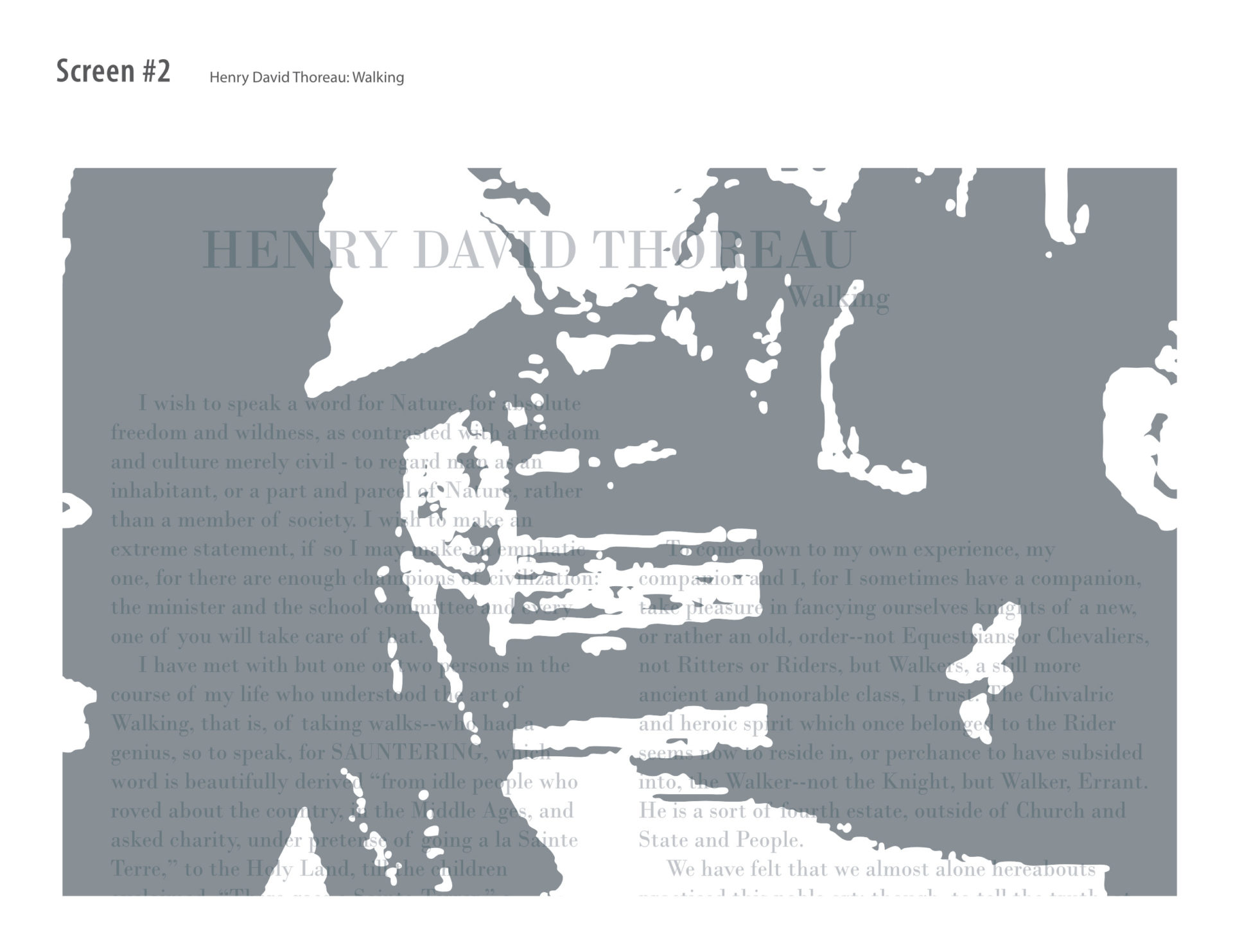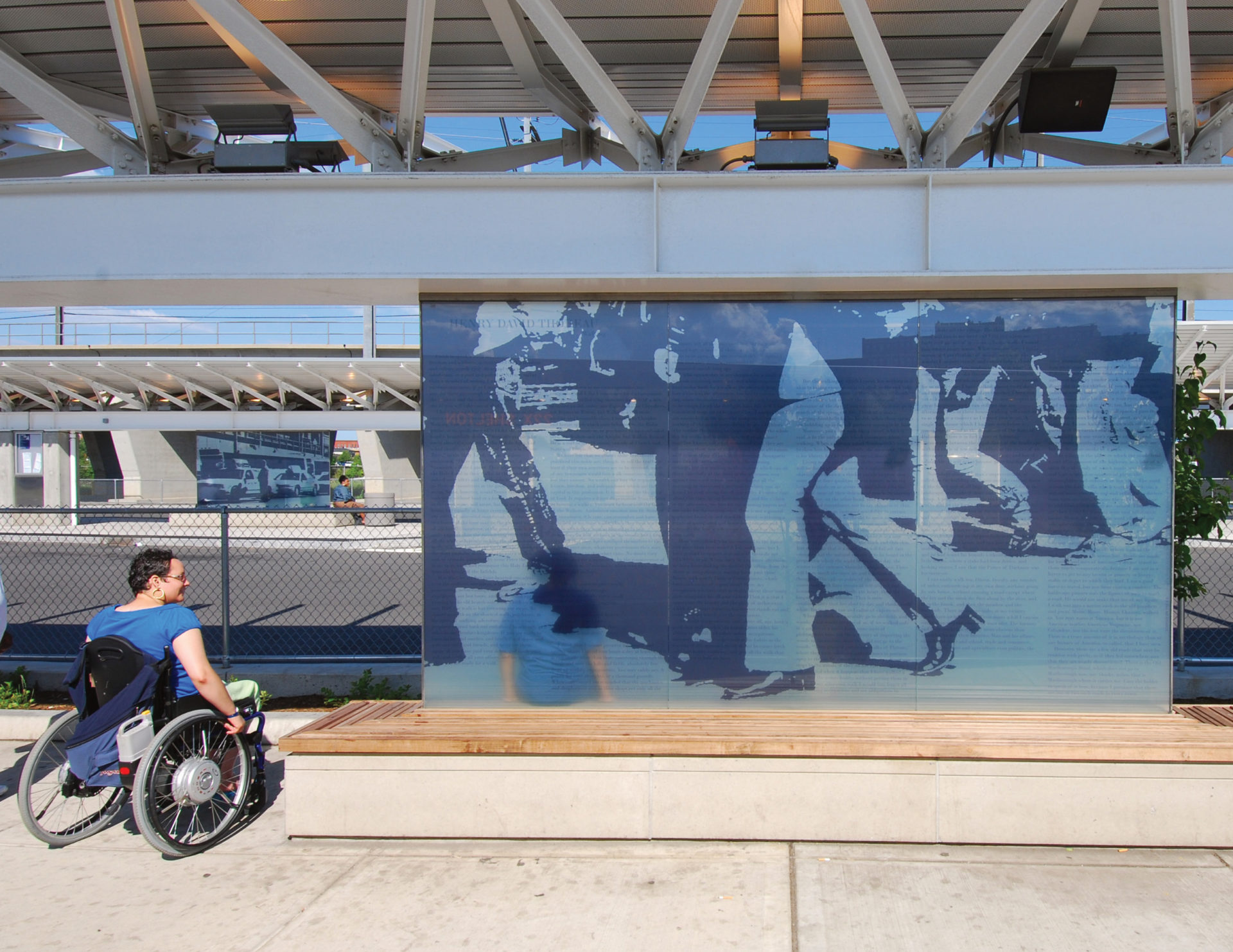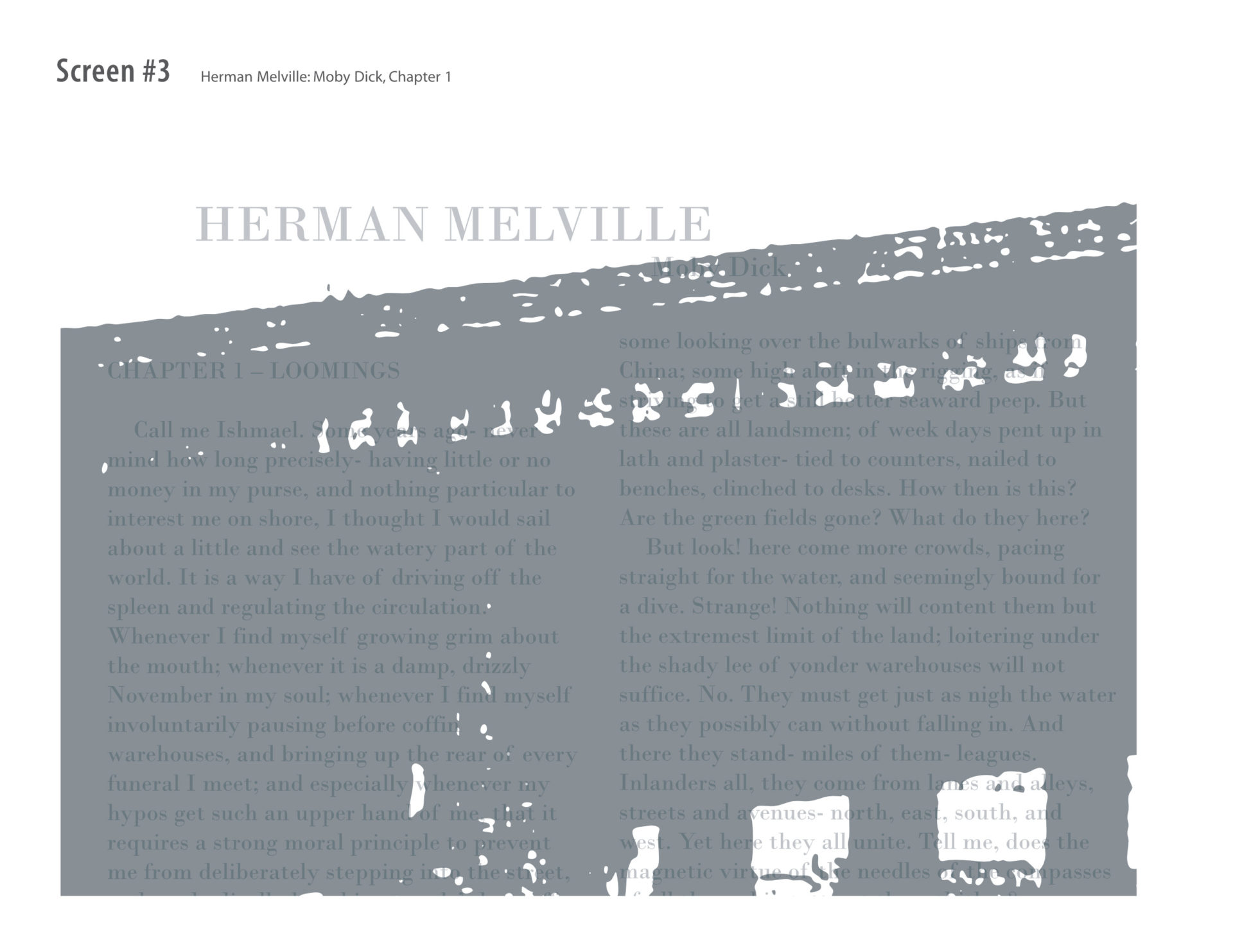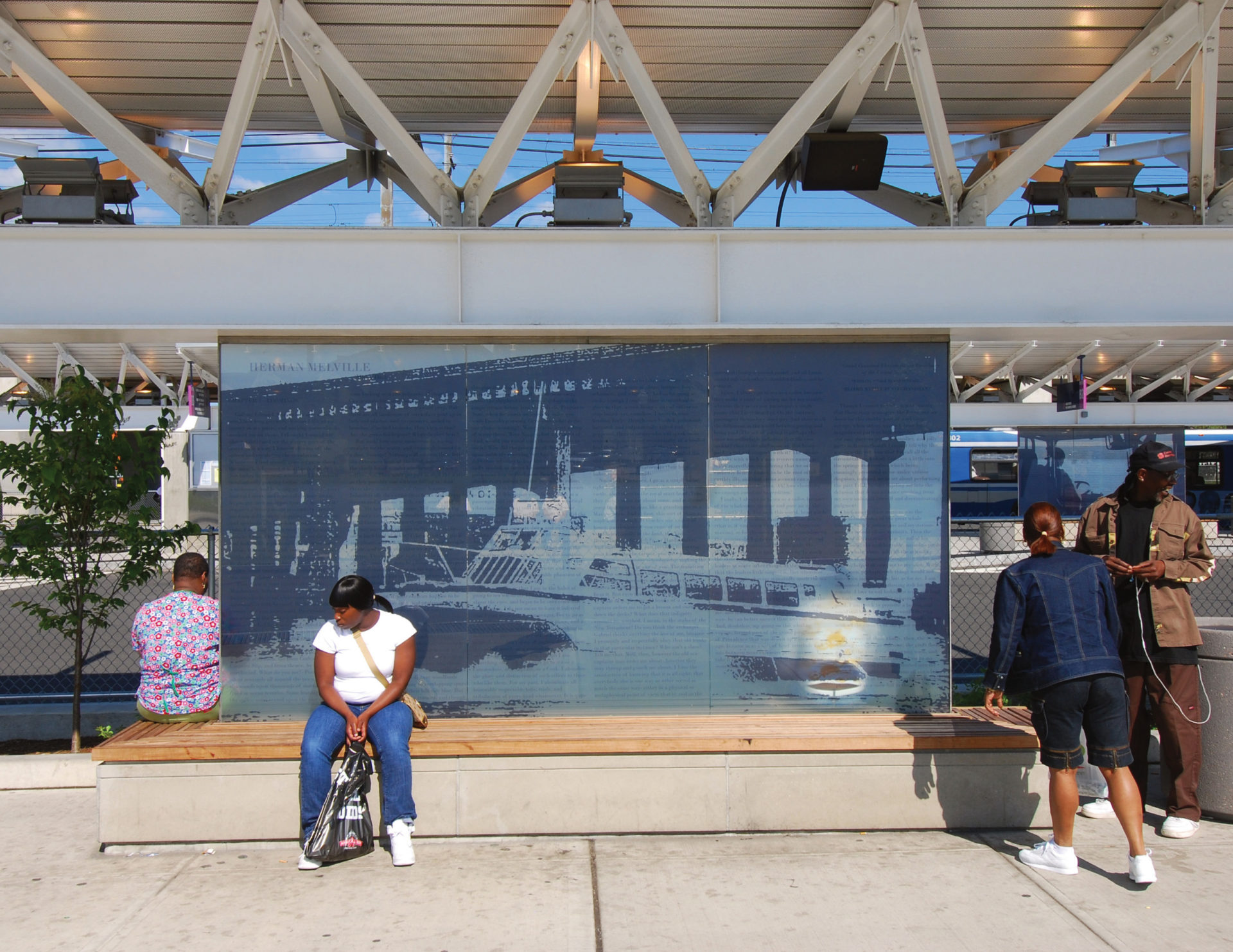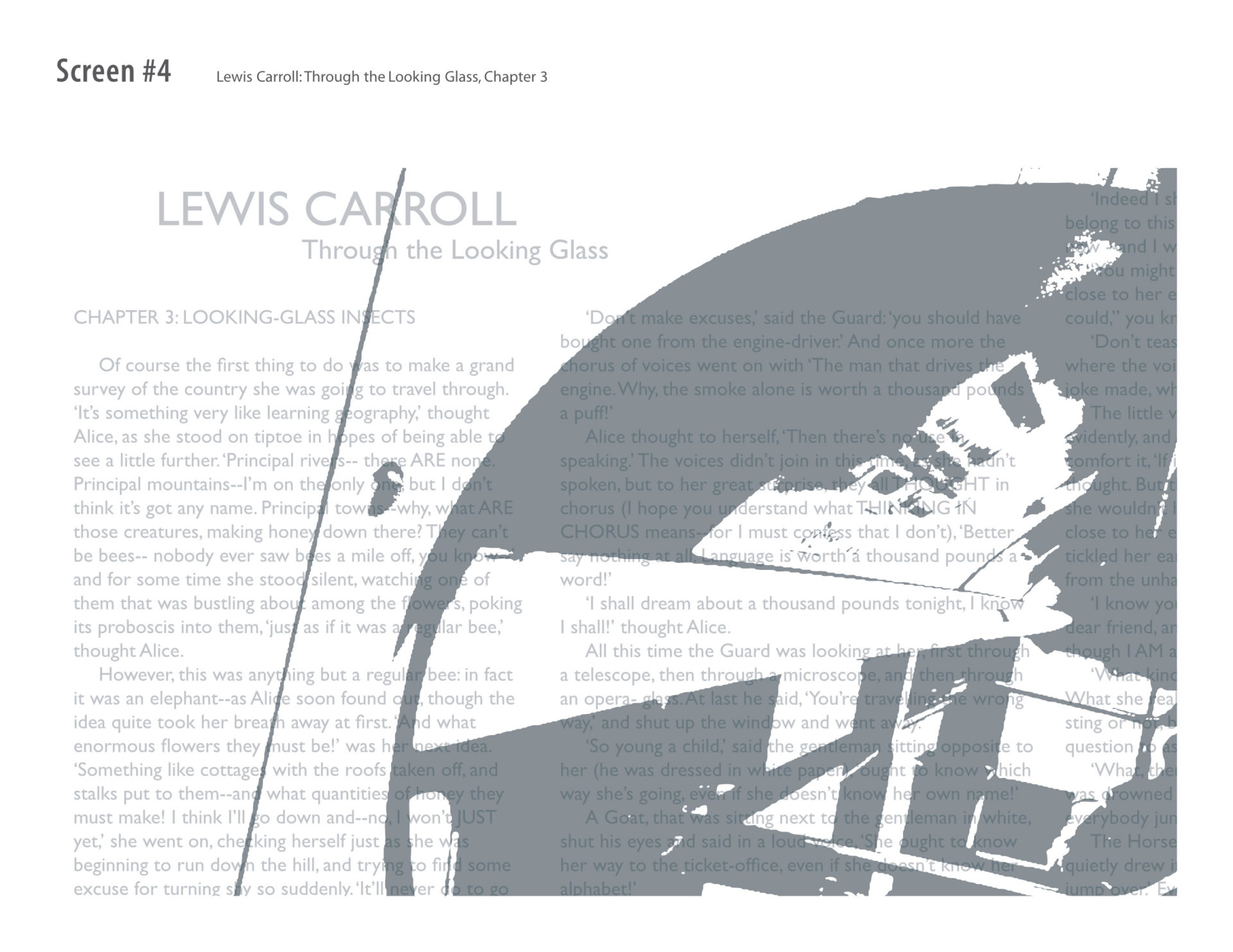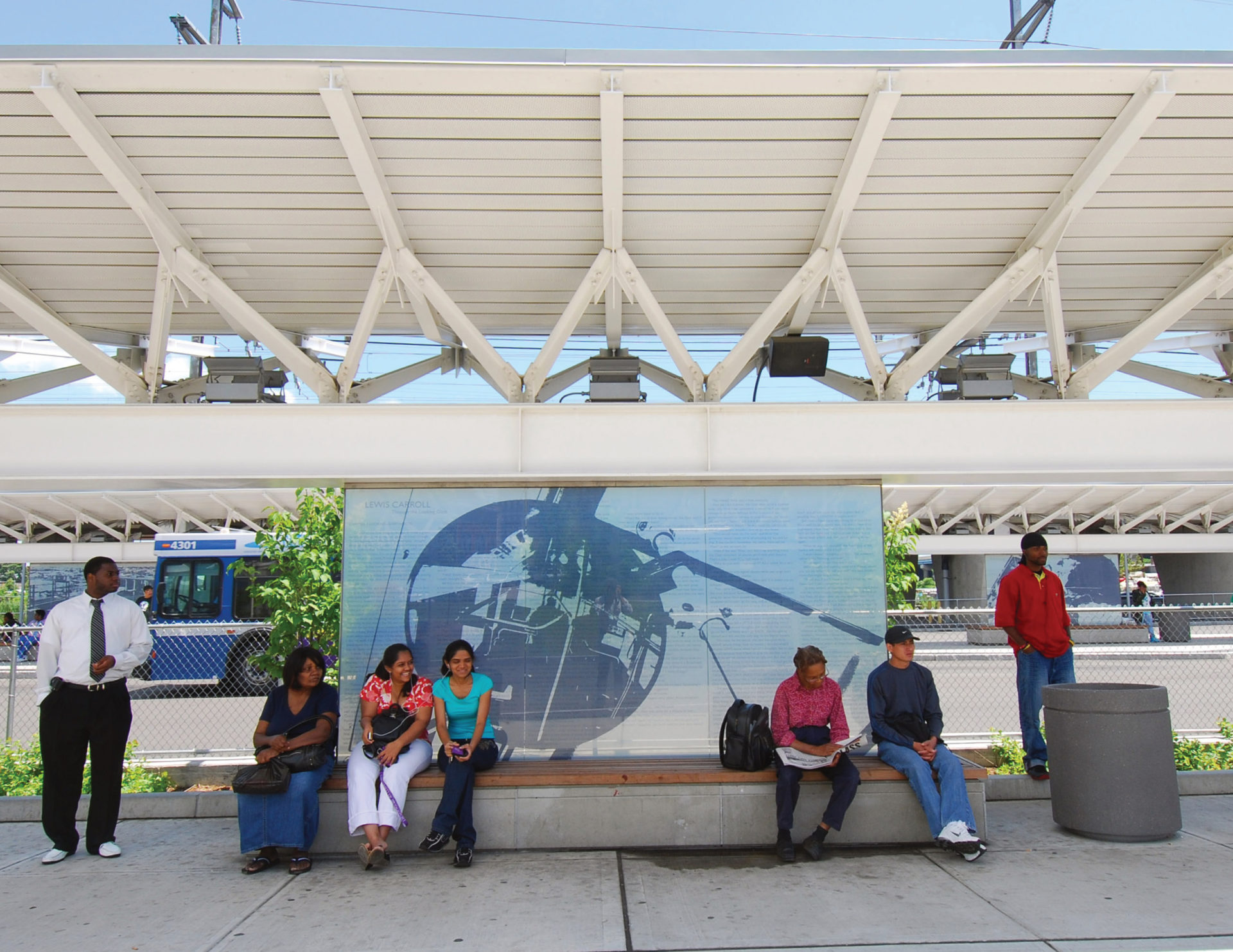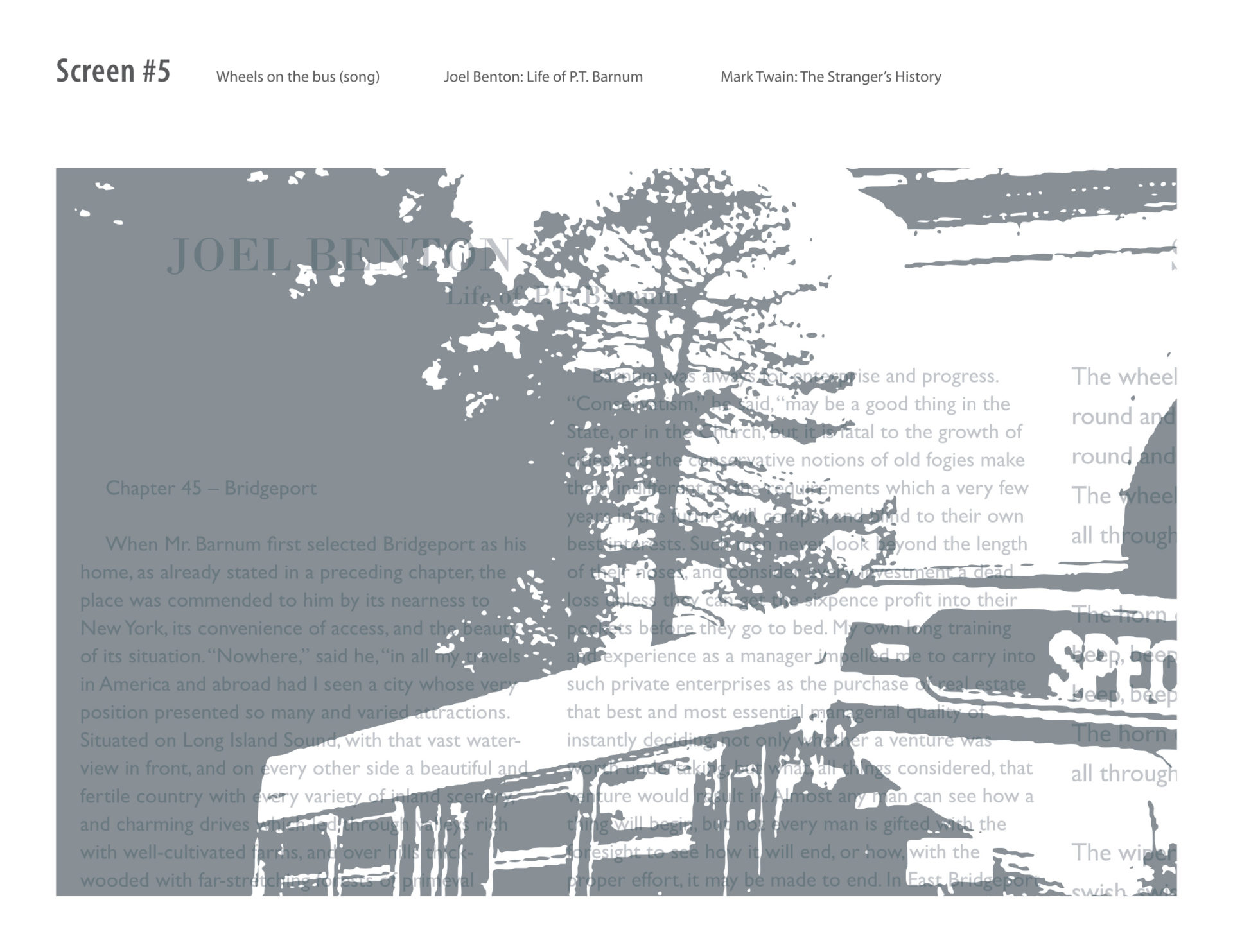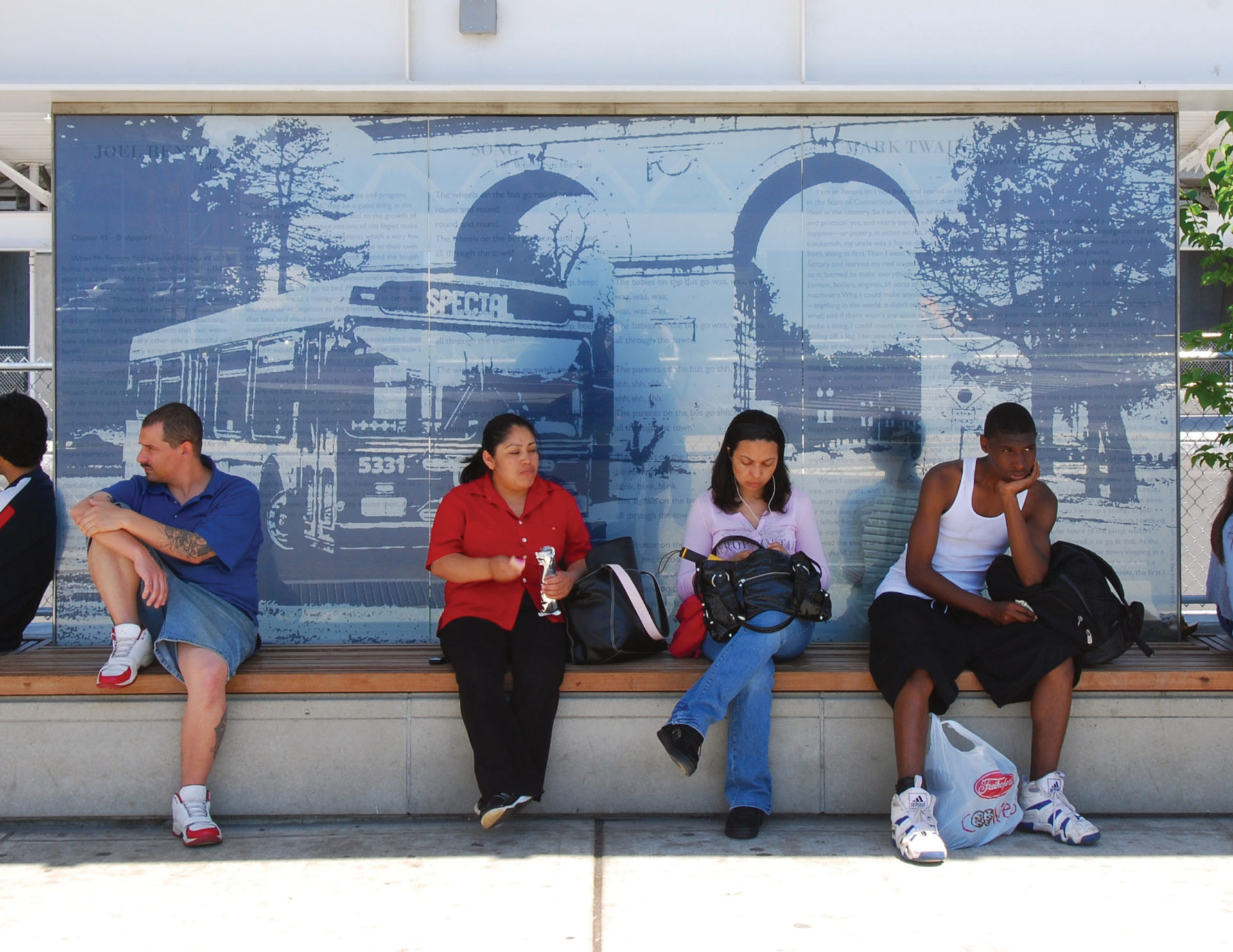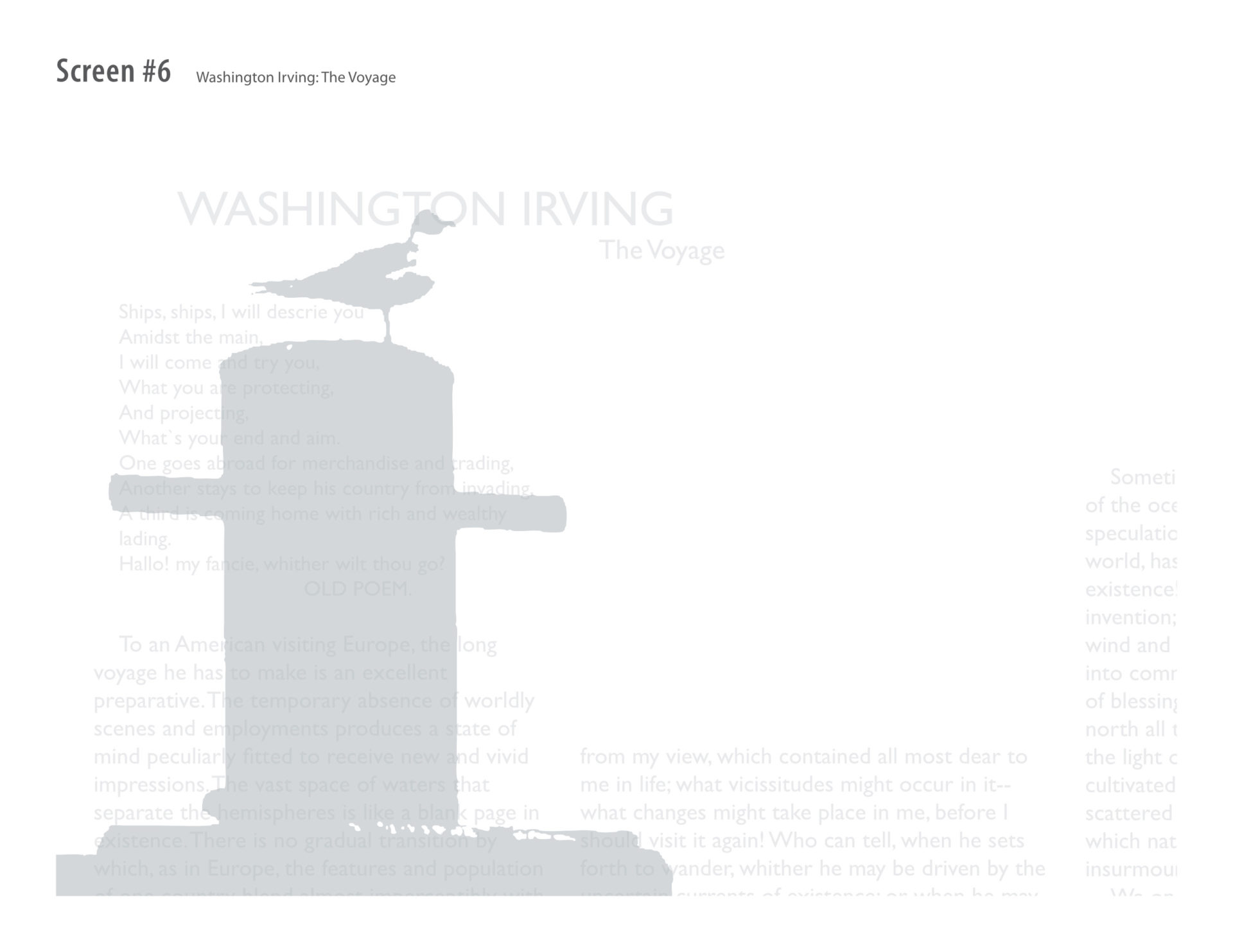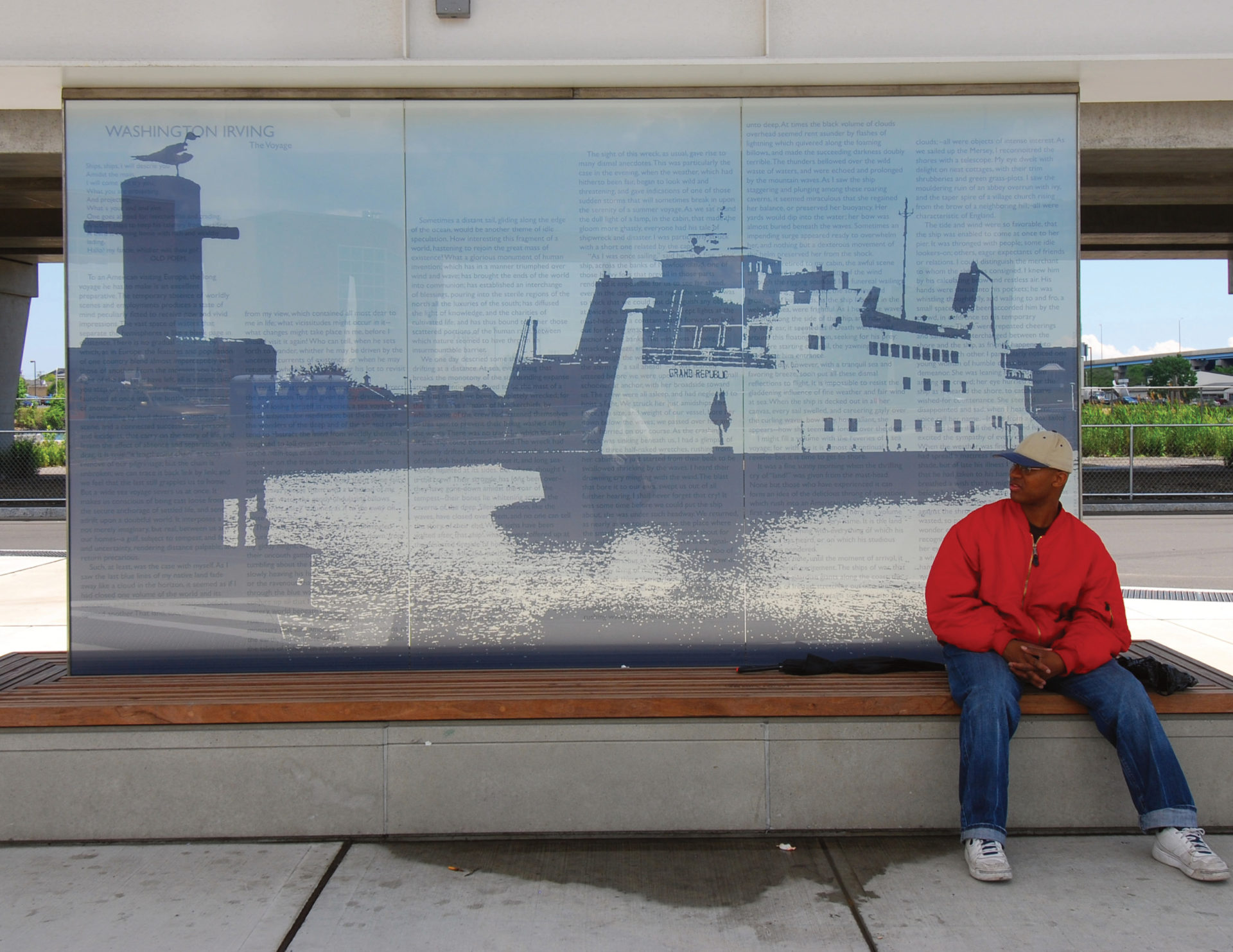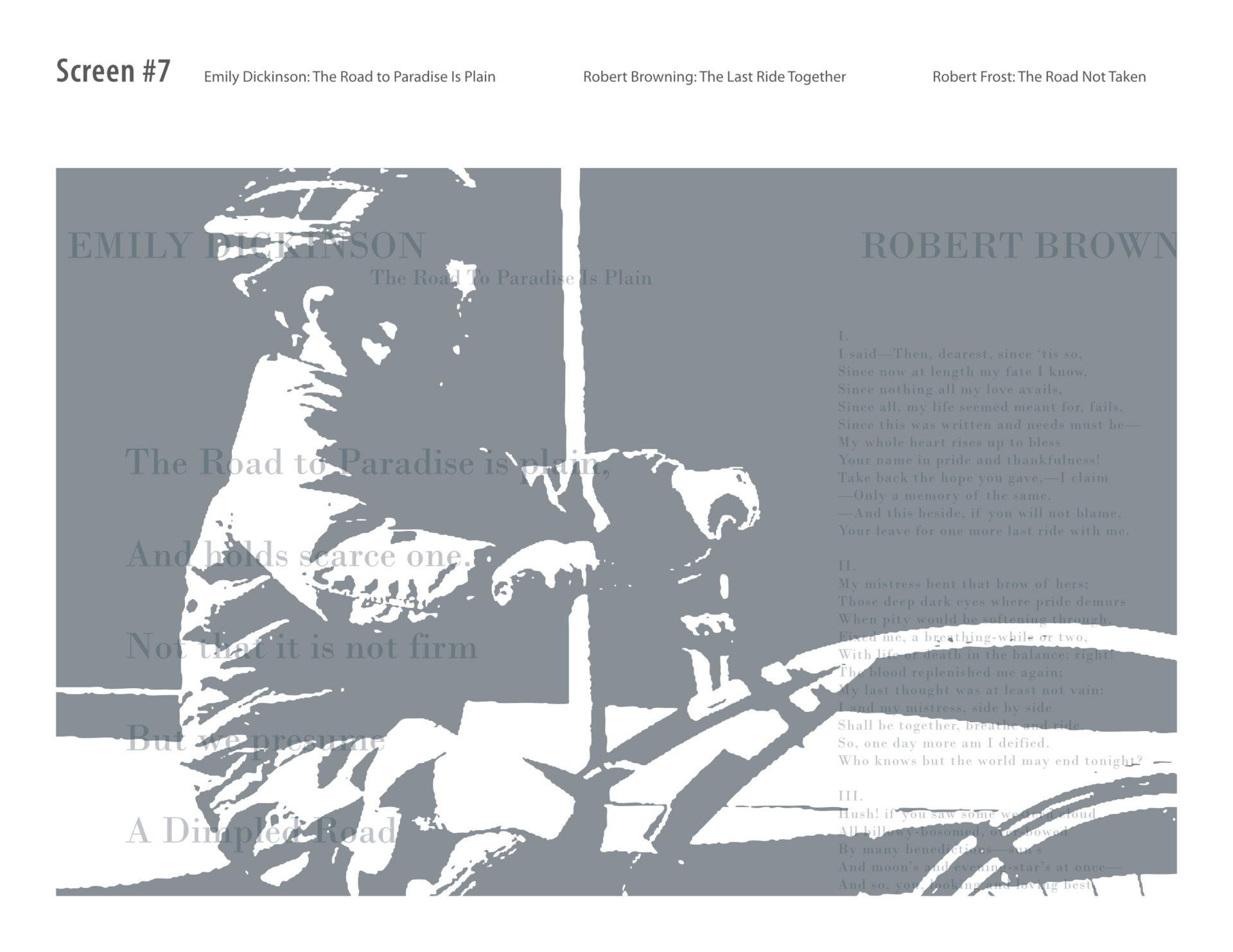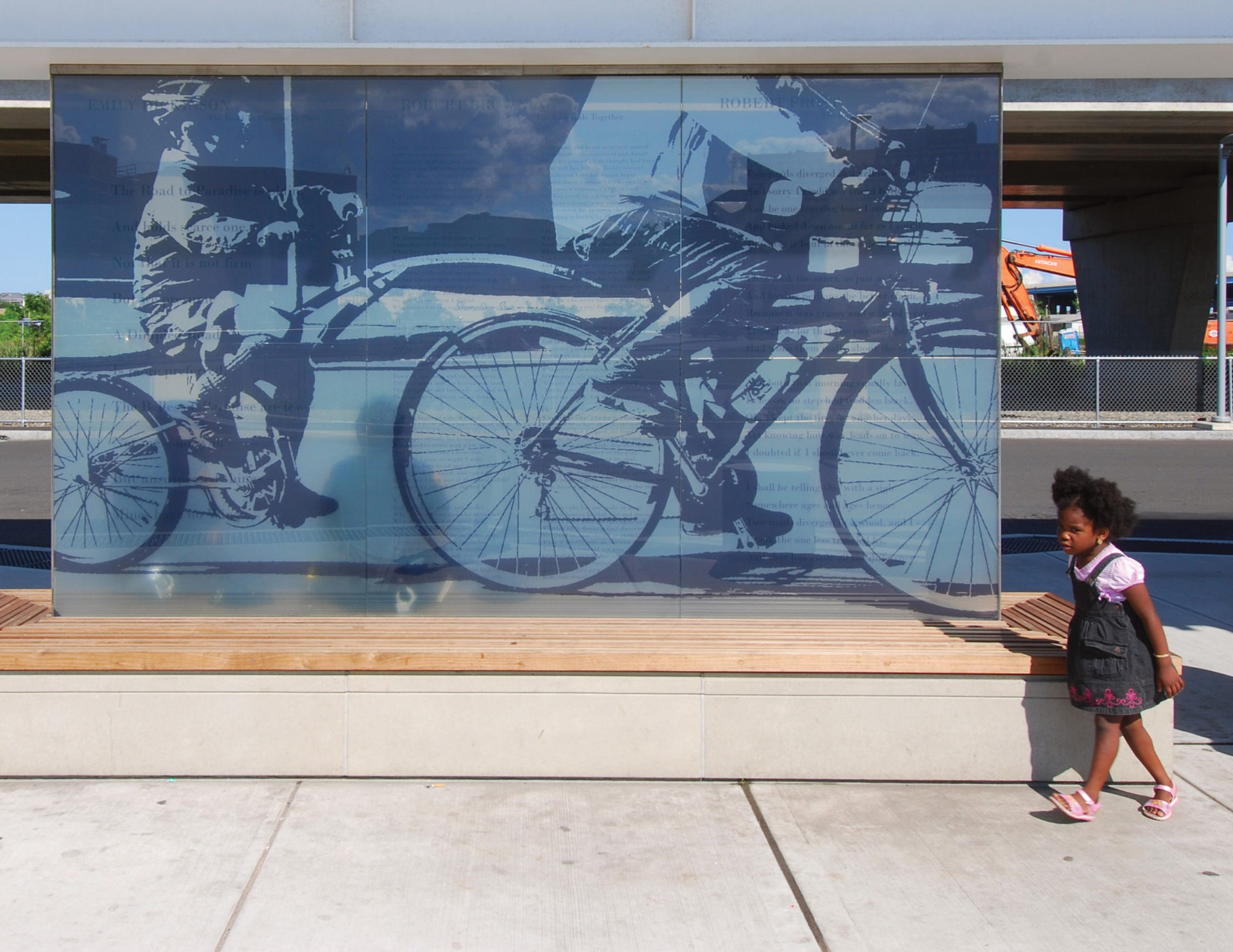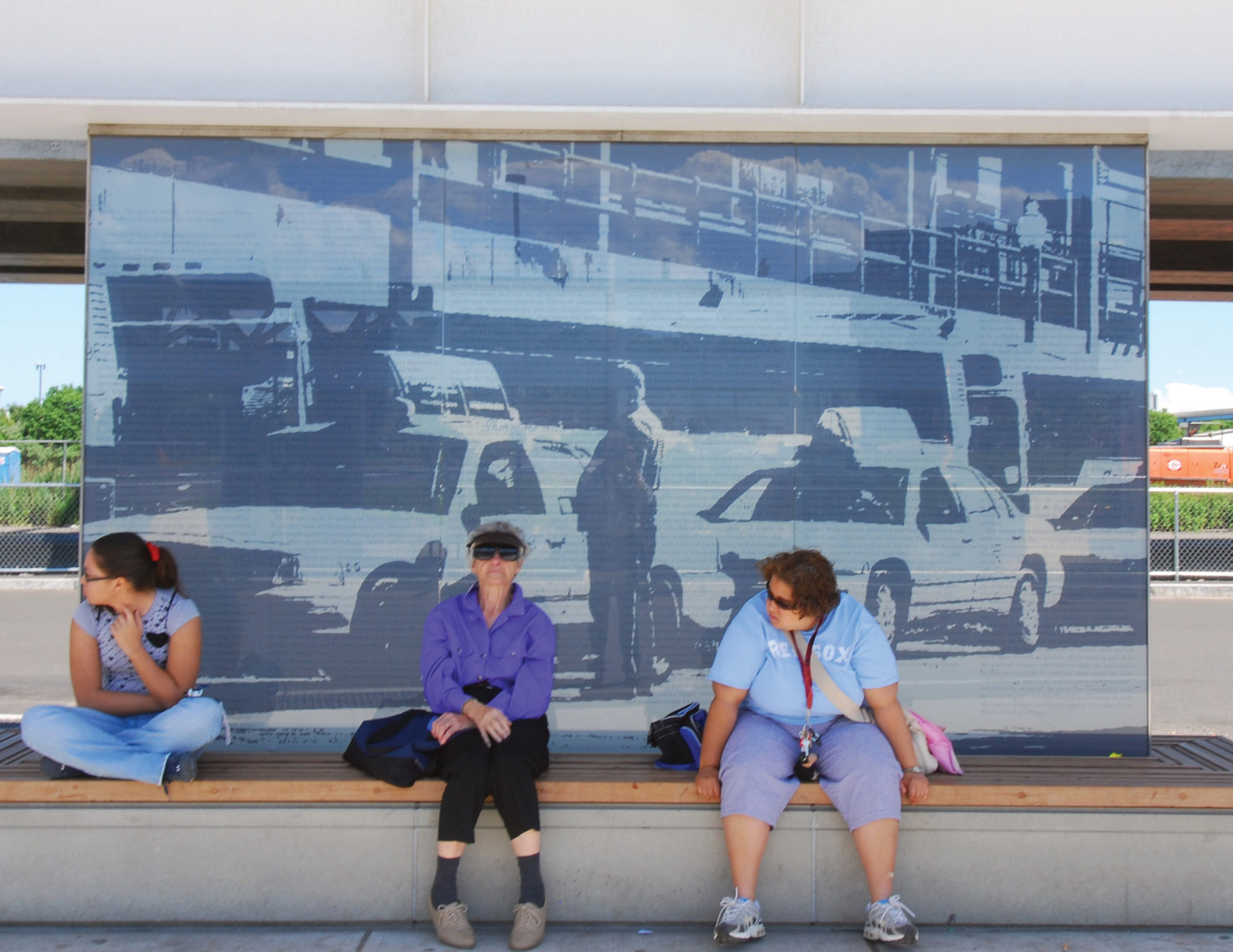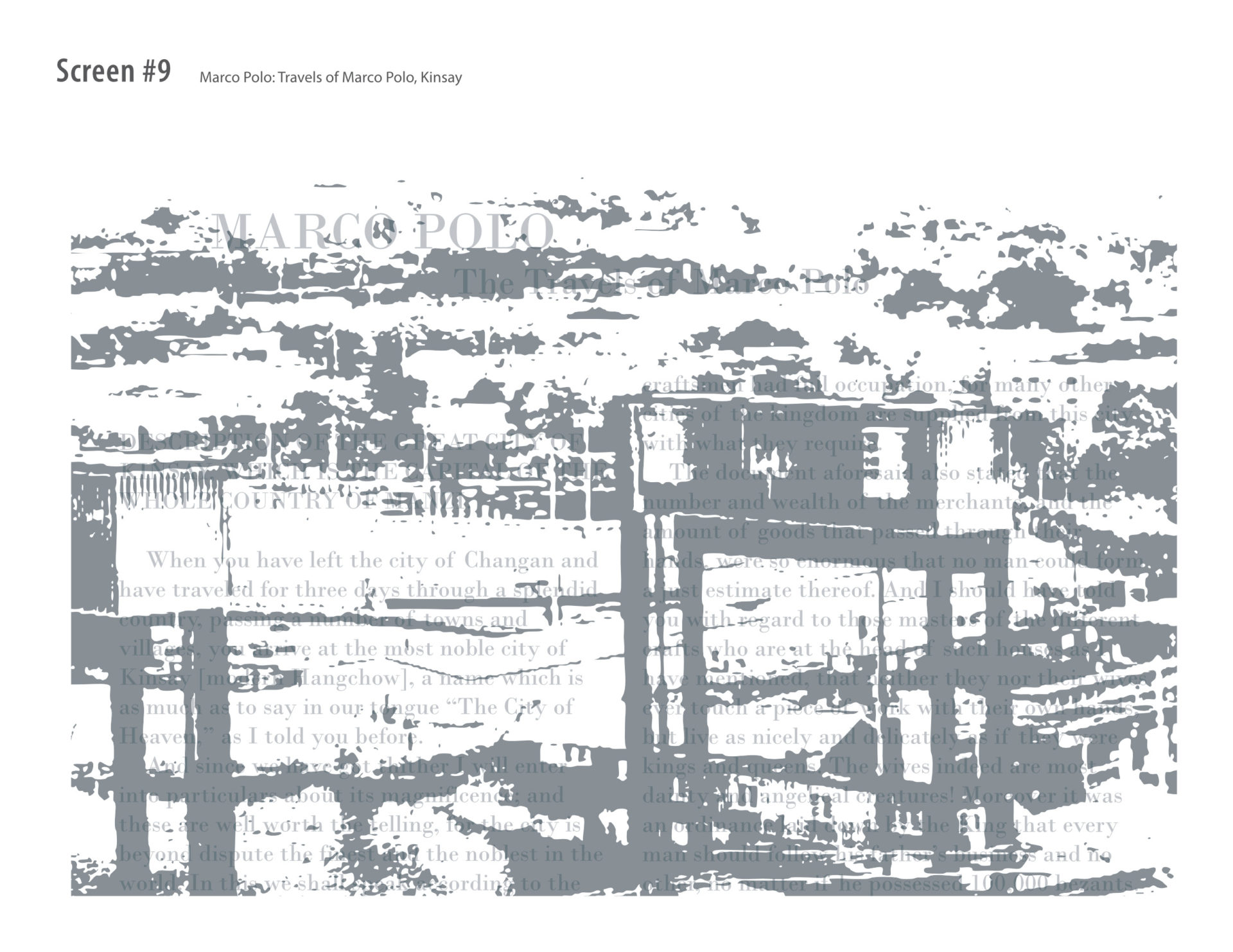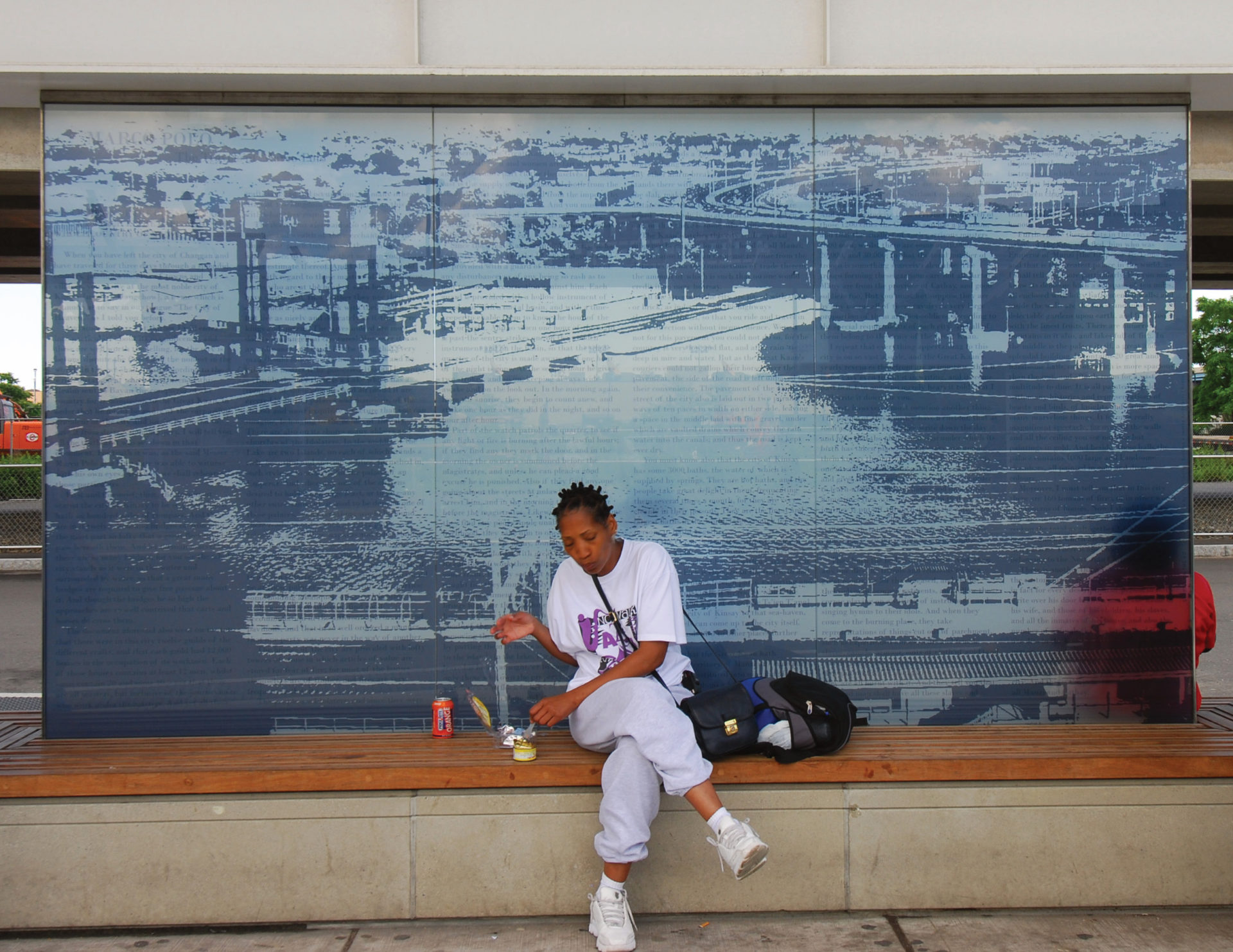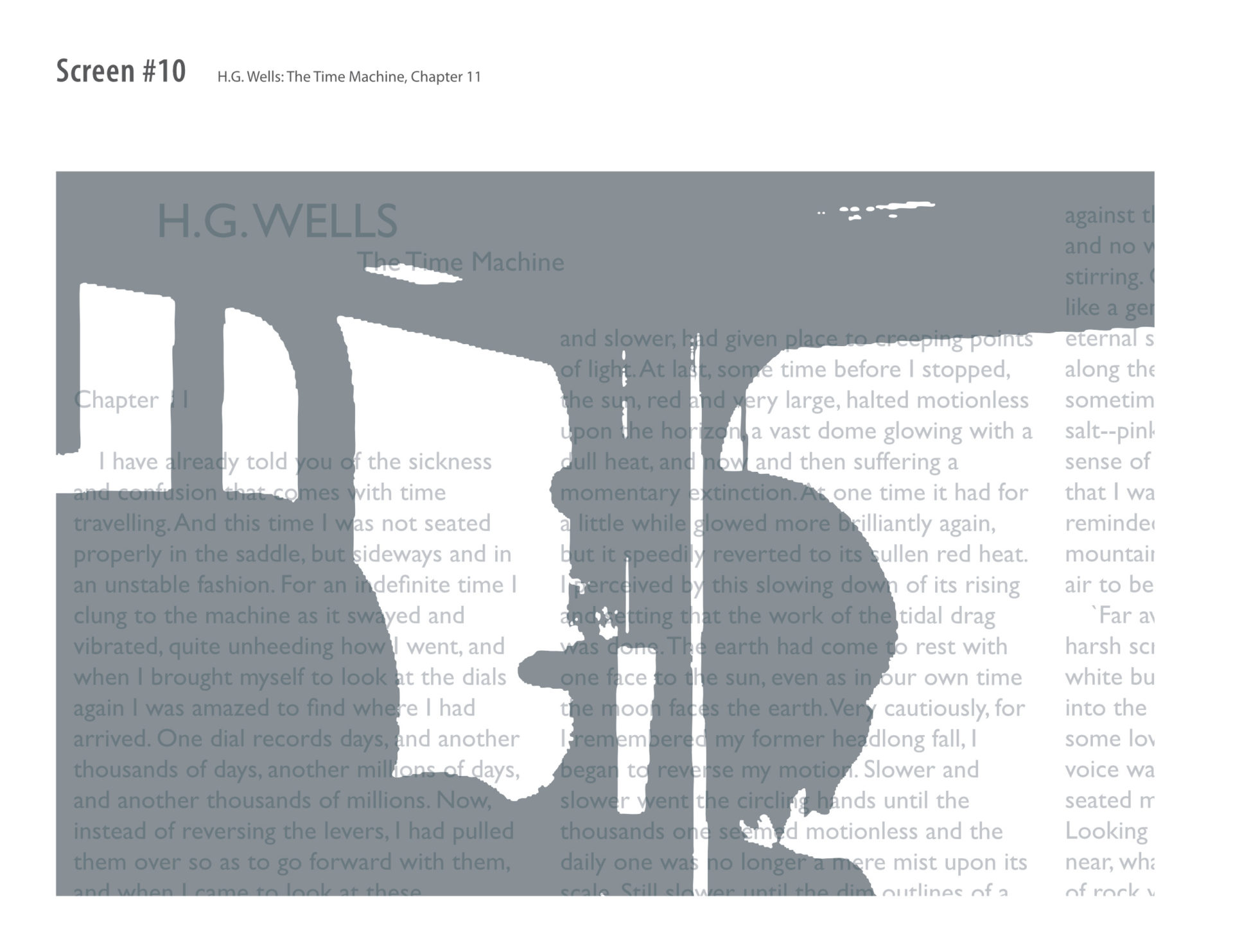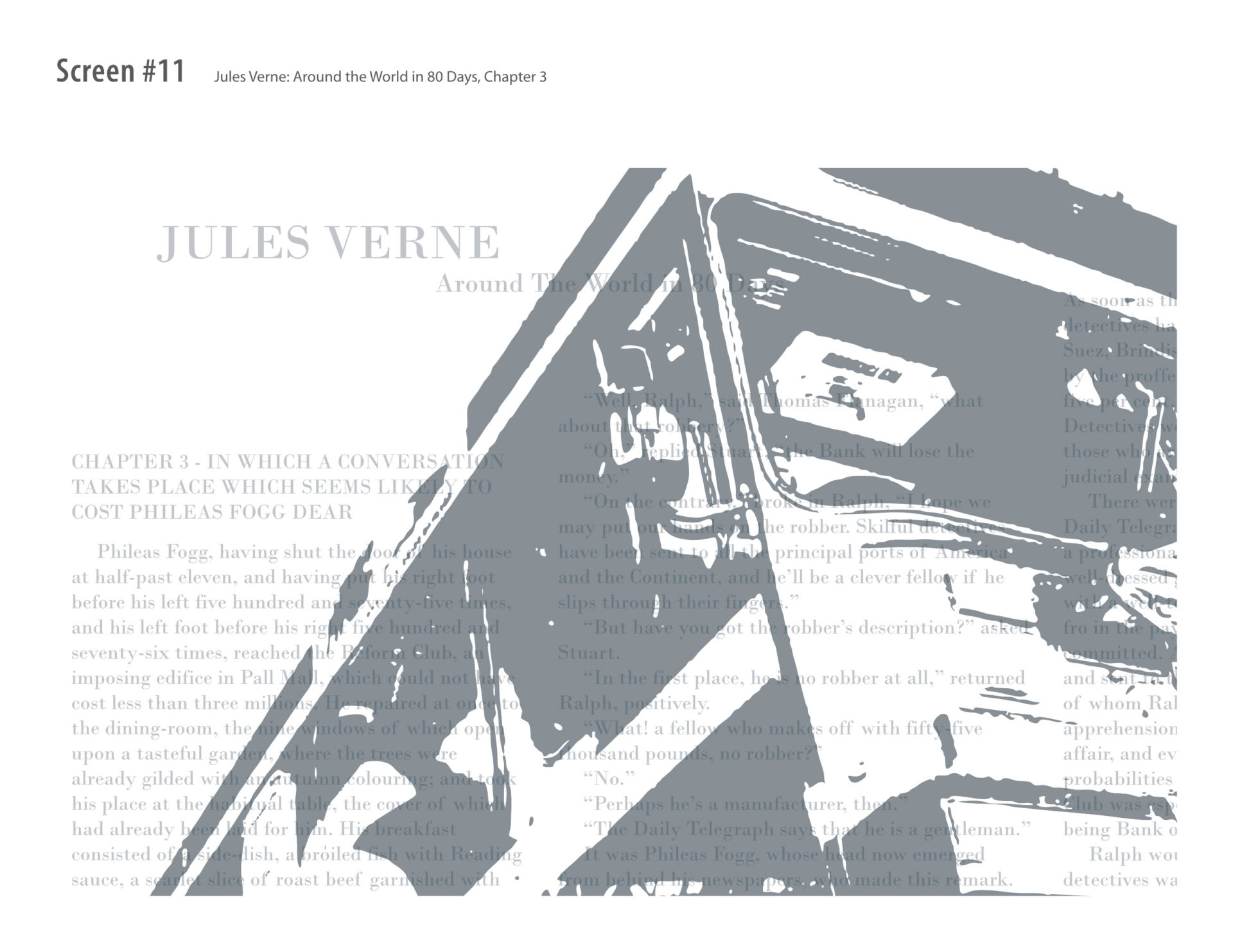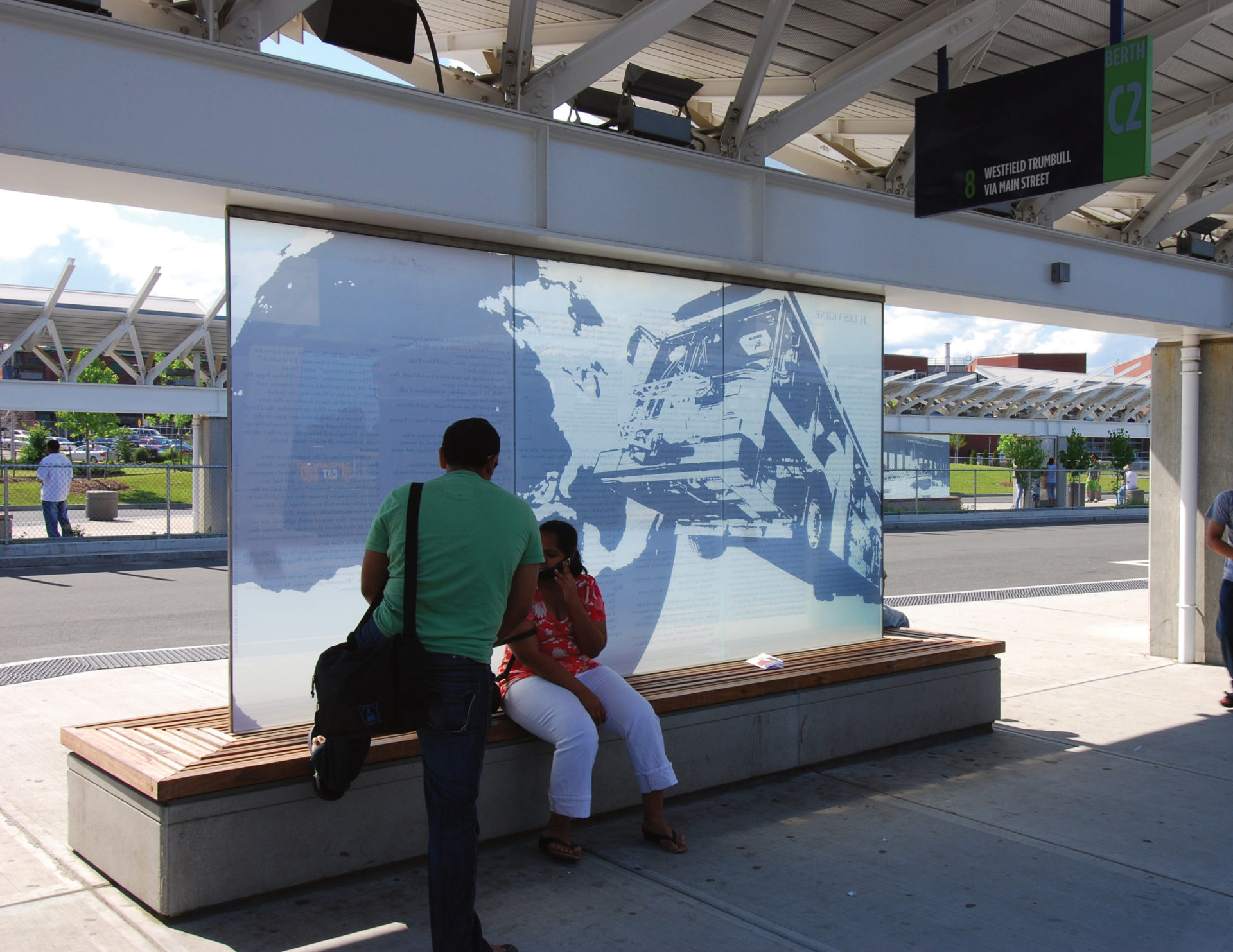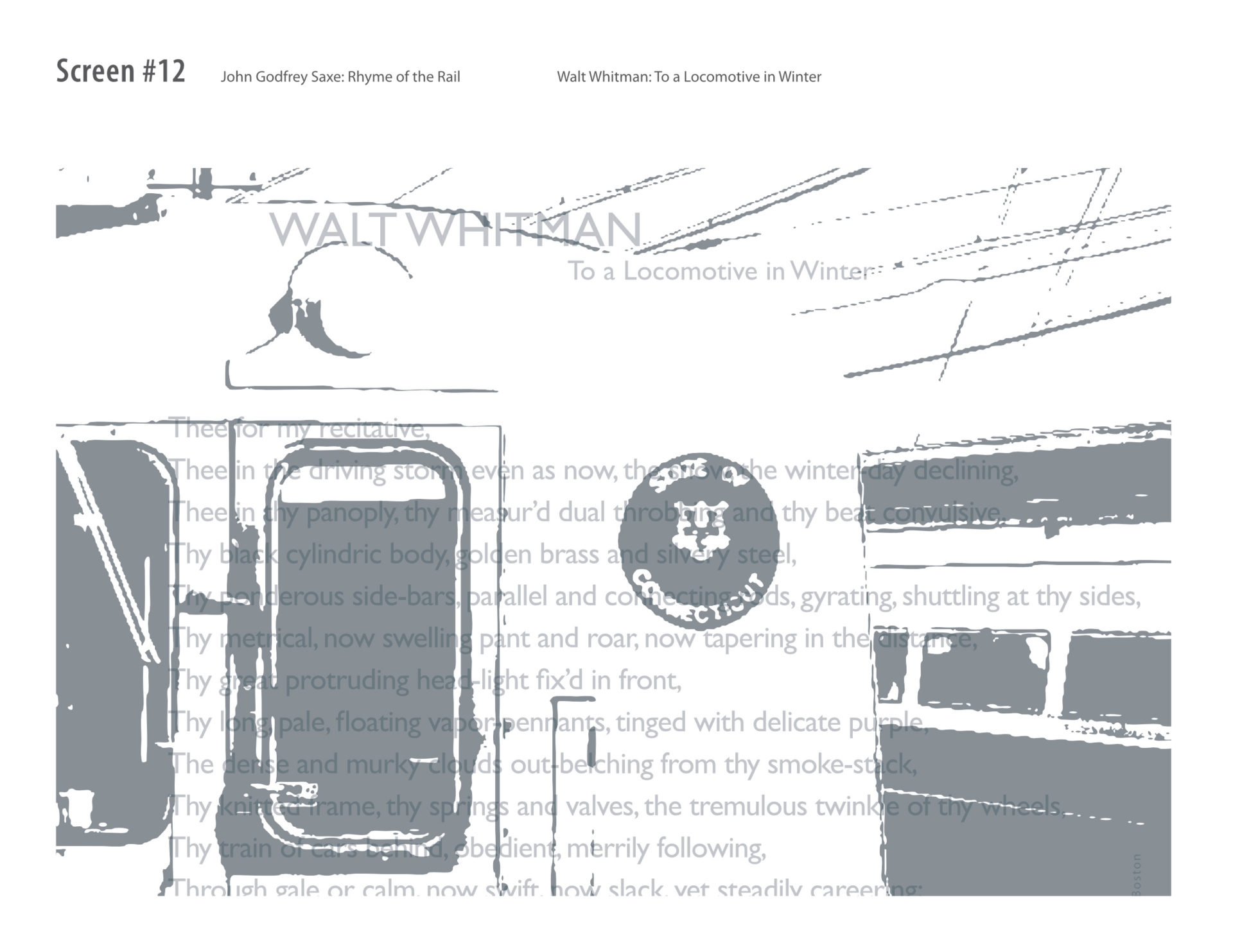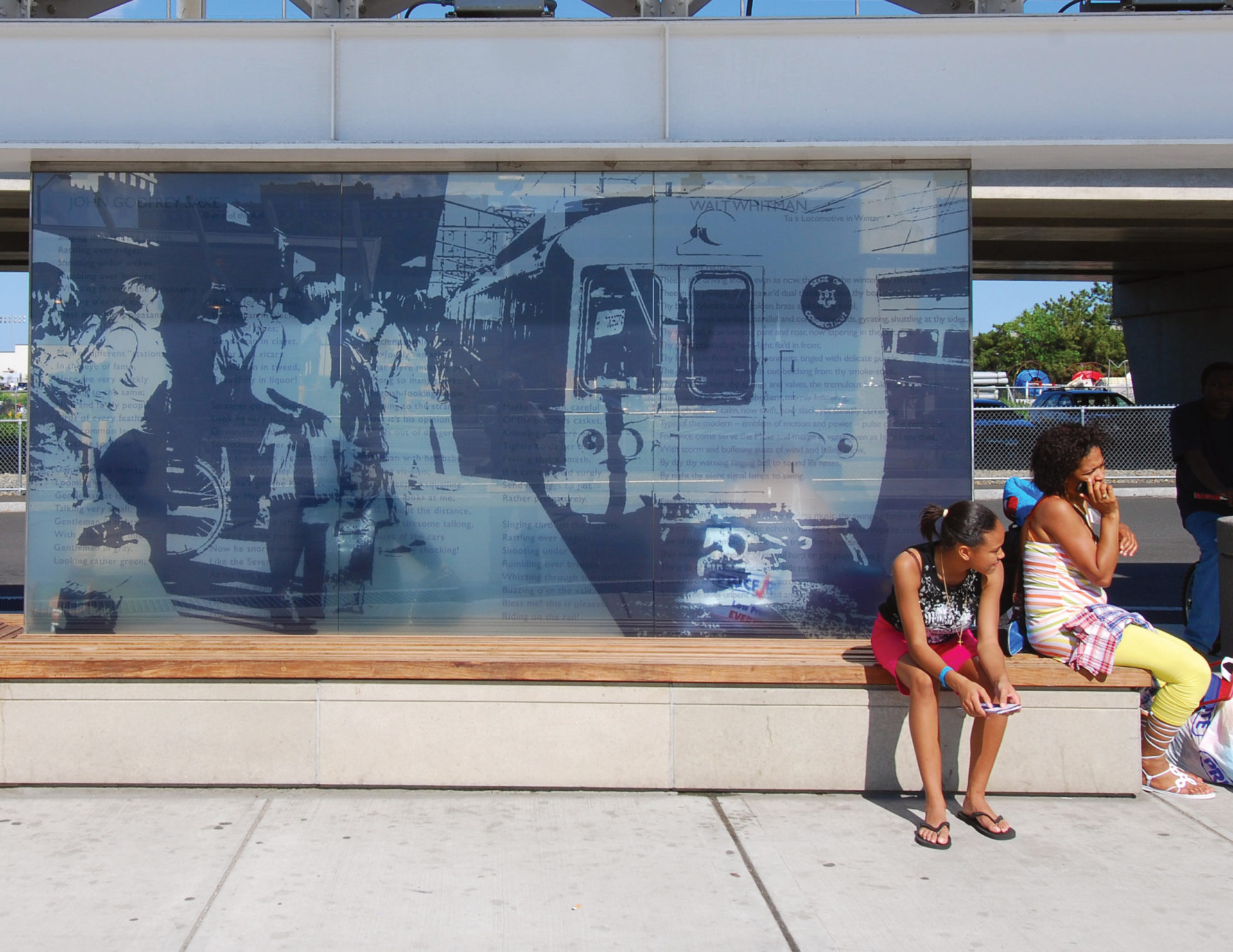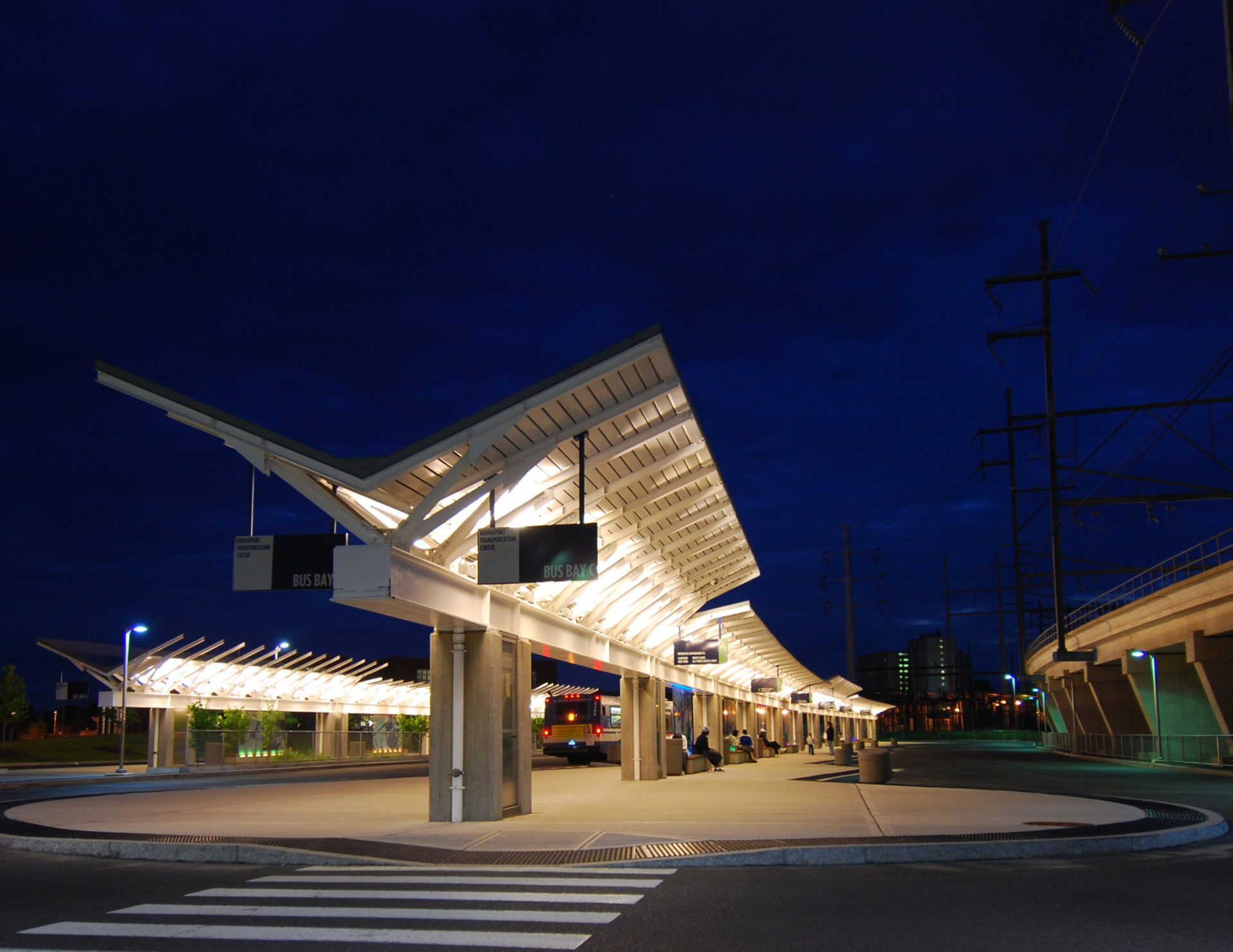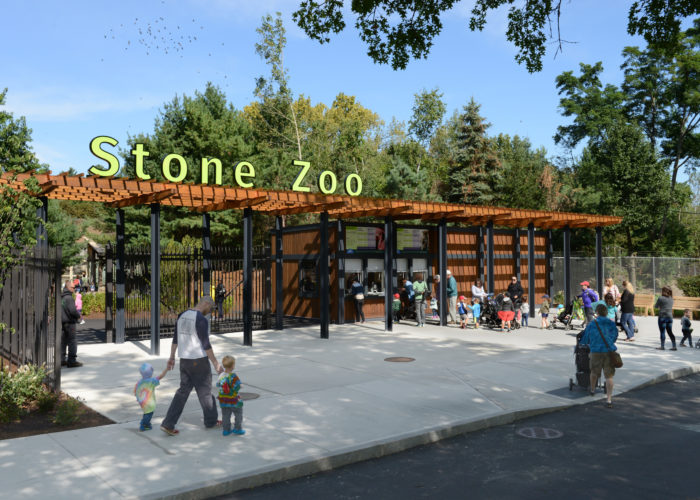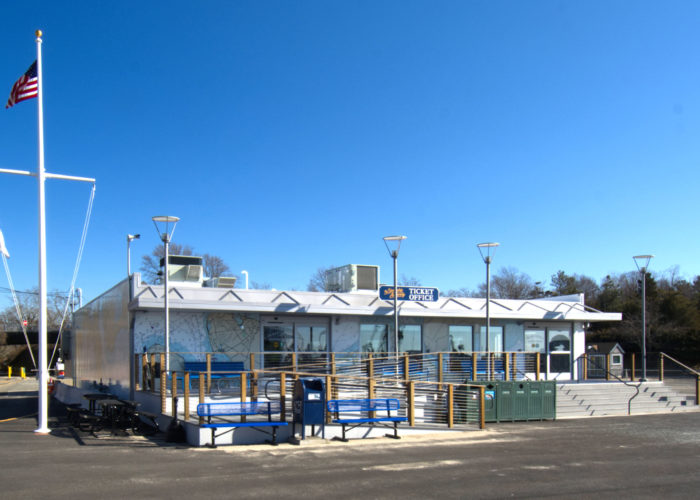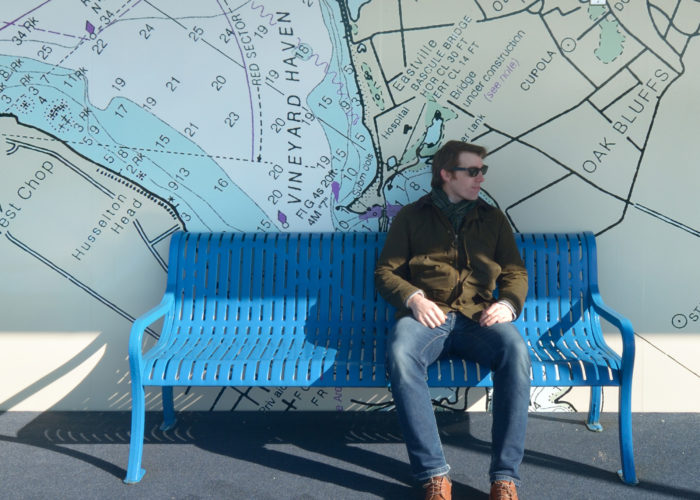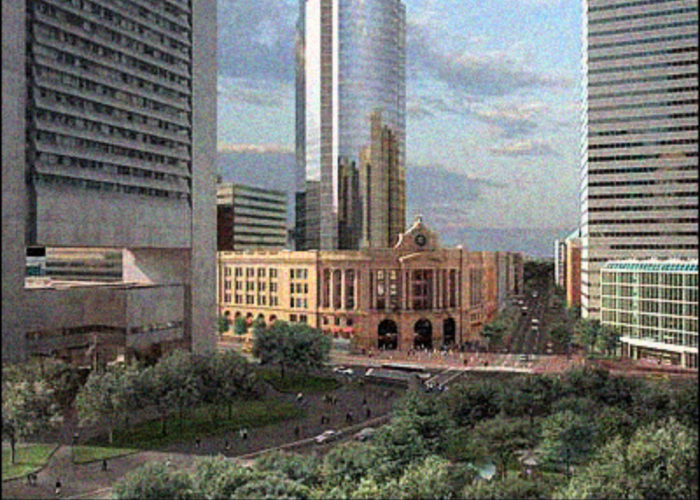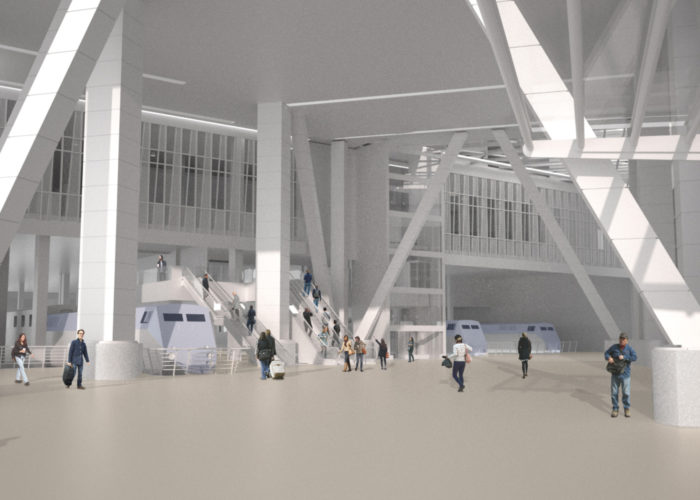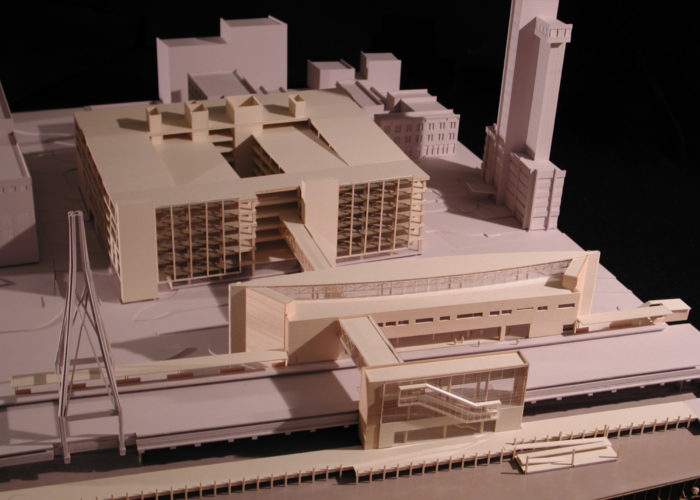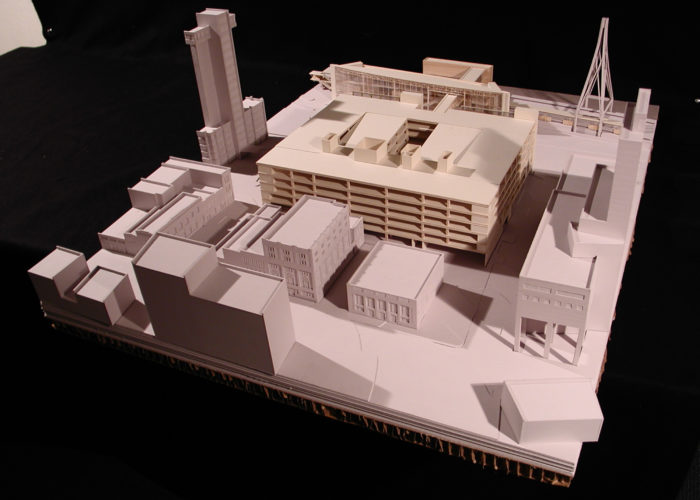Overview
BIA was selected to design a public art installation as part of their new Bridgeport Intermodal Transportation Center. The “Stories on the GO” project graphically merges images of mobility with historically significant texts concerning movement, travel, and journeys. The work entails 12 large tempered glass panels, each six feet high by twelve feet long. The composite graphics are printed on a transparent film, which is positioned between UV-resistant glass sandwich panels for long term protection and durability.
Seen from a distance, the monochromatic images depict scenes of mobility – from trains, buses and ferries, to people in motion. Up close, the text and images present a more complex canvas where stories weave in and out of images. Literary sources were selected for a variety of views on the theme of travel, ranging from Homer (The Odyssey), H. G. Wells (The Time Machine), and Thoreau (Walking), to the poetry of Emily Dickinson and Robert Frost.
The glass panels serve functionally as wind screens beneath the steel canopies of the bus loading zones. Set atop a series of custom wood benches, each glass panel is illuminated by a concealed, programmable LED lighting system that transforms the entire busway at night with a virtual light show.
Project Intent
The new complex improves the regional public transportation network by replacing the existing bus station with a new Intermodal Transportation Center of significantly greater capacity. It also improves connections to the adjacent waterfront commuter train station and ferry terminal serving Long Island Sound.
Site Description/Urban Context
Formerly used as surface parking lot for rail commuters, the triangular site is adjacent to the elevated Northeast Corridor railroad right-of-way and Interstate 95. It is in close proximity to the existing train platforms, as well as a recent commuter-parking garage, Long Island Sound Ferry service, and the Downtown Bridgeport core. Design Process: The architect was responsible for all aspects of the public art installation, including: Research and selection of stories and poetry relating to travel, all of the photography, and development of a technical matting process for layering different colors of text across monochromatic images (to enable legibility from different viewing distances). At a distance the contours of the images read clearly, while up close the text reveals itself as stories and poems by familiar authors. This is the first time this collection of writings on movement have been presented together in a setting dedicated to public transportation.
